Hola! We are still sailing on Pride and heading up from Spain, around Portugal, and eventually ending in Dover, England, United Kingdom.
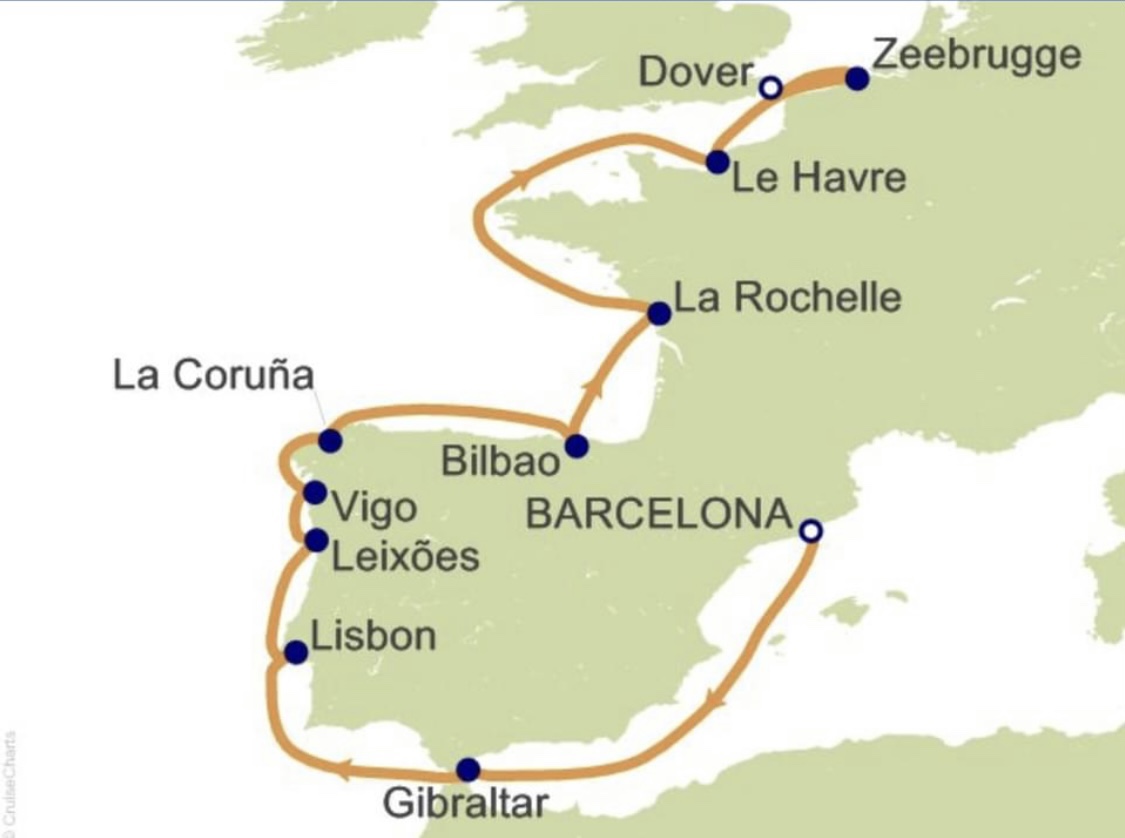
This particular post is focused on the ports we visited that are located on the Iberian peninsula. We will post again soon about the latter half of our trip: Northern France and Belguim.
Like most of our cruises, this journey started with a day at sea, but this one gave us a neat surprise.
I woke up feeling lucky. We went to the shore excursion seminar, where we knew that Carnival gave away a bingo session to someone who showed excitement. I was determined to be that winner! “I love bingo!” I shouted, and then Corey pushed me toward the stage. One free bingo package was handed to me, including a pink dauber!
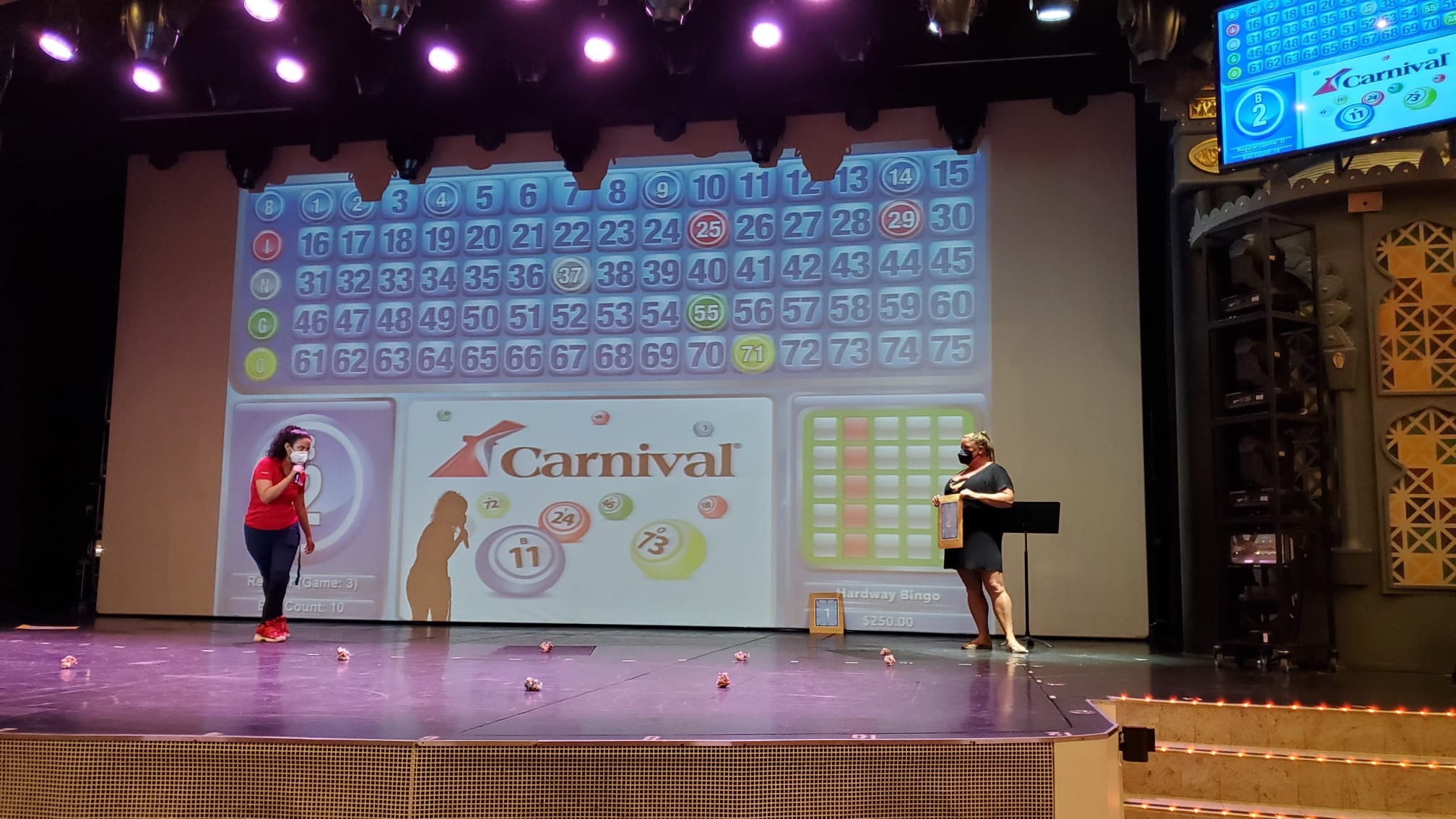
During the final game of that day’s bingo session, I was one number away… and then waited… and waited. Usually getting ahead early just gets my hopes up and then someone else wins. But this time I won! But there was one more hoop to jump through to get there: There were three envelopes to choose from, and one of them contained $1000. At first I chose Envelope 2. But then they took away Envelope 3 and gave me the chance to switch or stay. On an earlier cruise at trivia, I had learned about the Monty Hall problem so I knew what to do. I switched to Envelope 1 and inside was the grand prize.

Woo-hoo!! $1,000 baby!!
What a fun way to start cruise number four of our travel sabbatical.
Such great ports of call on this itinerary, and many that I had visited before. Everything is new to Corey. We tried to plan sightseeing that involved new experiences for both of us. We also sought out DIY walking tours, public transit, and things off the beaten path for cruisers. I like to distance myself from the glitzy hats and fanny packs. When public transit is close to the cruise terminals, tickets are usually around $1.25/person.
Gibraltar, Overseas Territory of the United Kingdom

We sailed by the Rock a few weeks ago when we entered the Mediterranean, and this time we sailed into port.
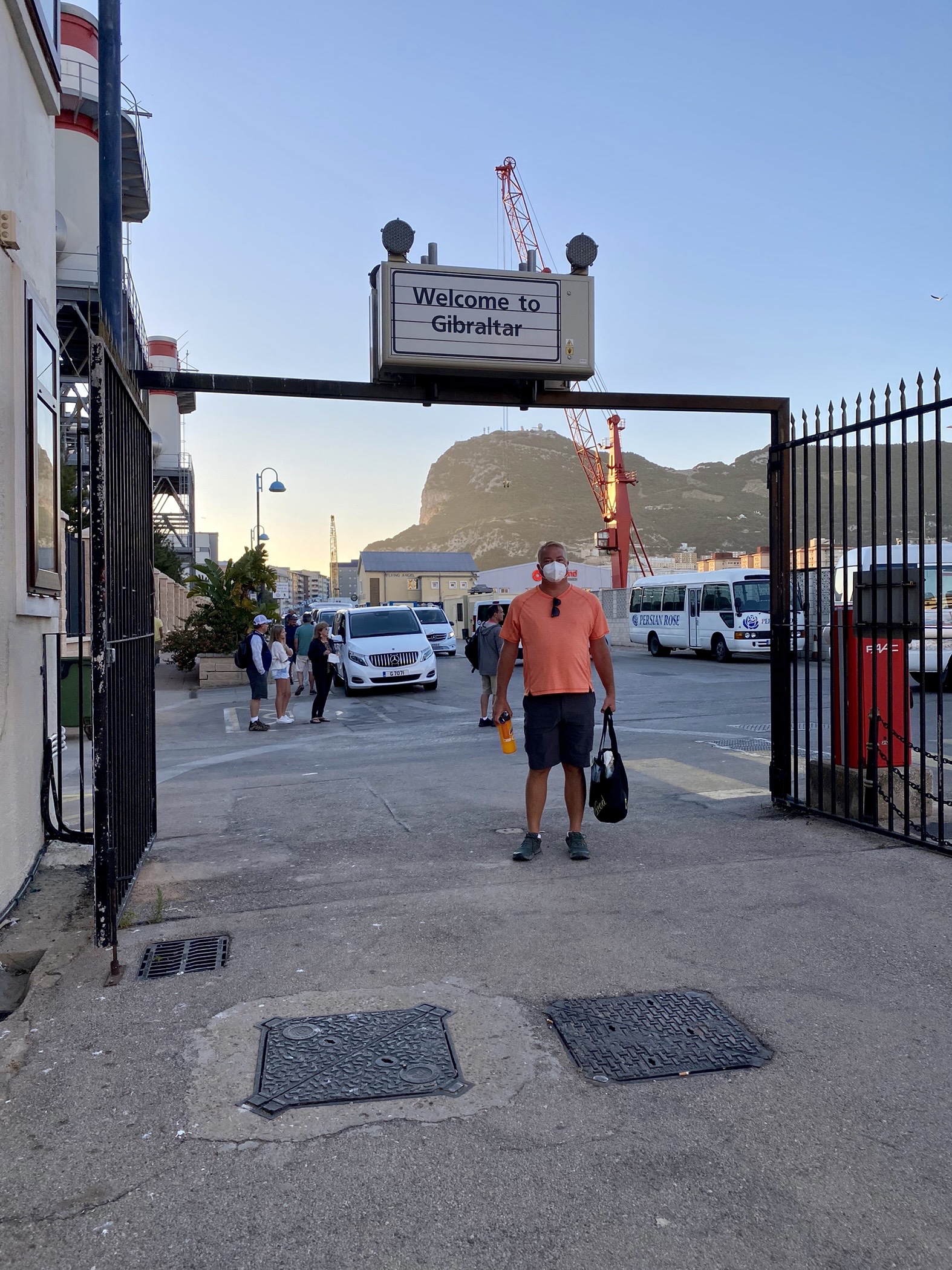
There are various ways to tour the 3 square mile British territory. We chose our own adventure.
We got off the ship at half past 7 and walked clockwise around the giant rock mountain. We had decided to start walking together to the beaches on the eastern side, and then have Corey hike up the Rock on his own. I had already done that hike about a decade prior.
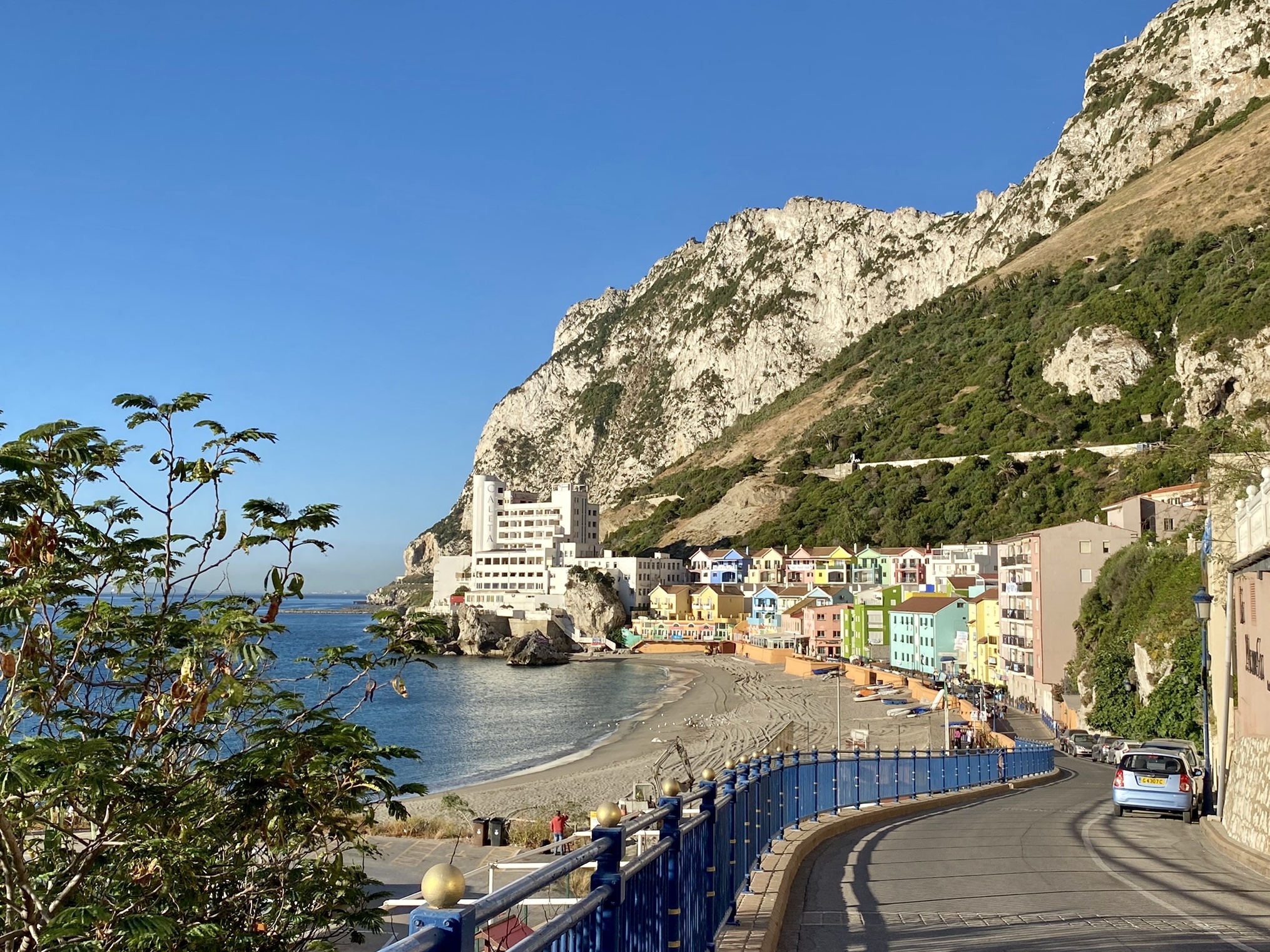
After about an hour of walking along some very scenic and also not-so-scenic footpaths, we reached my destination: Sandy Bay. The beach here had previously eroded badly, so they imported sand from the Sahara Desert. It was soft, golden and lovely!
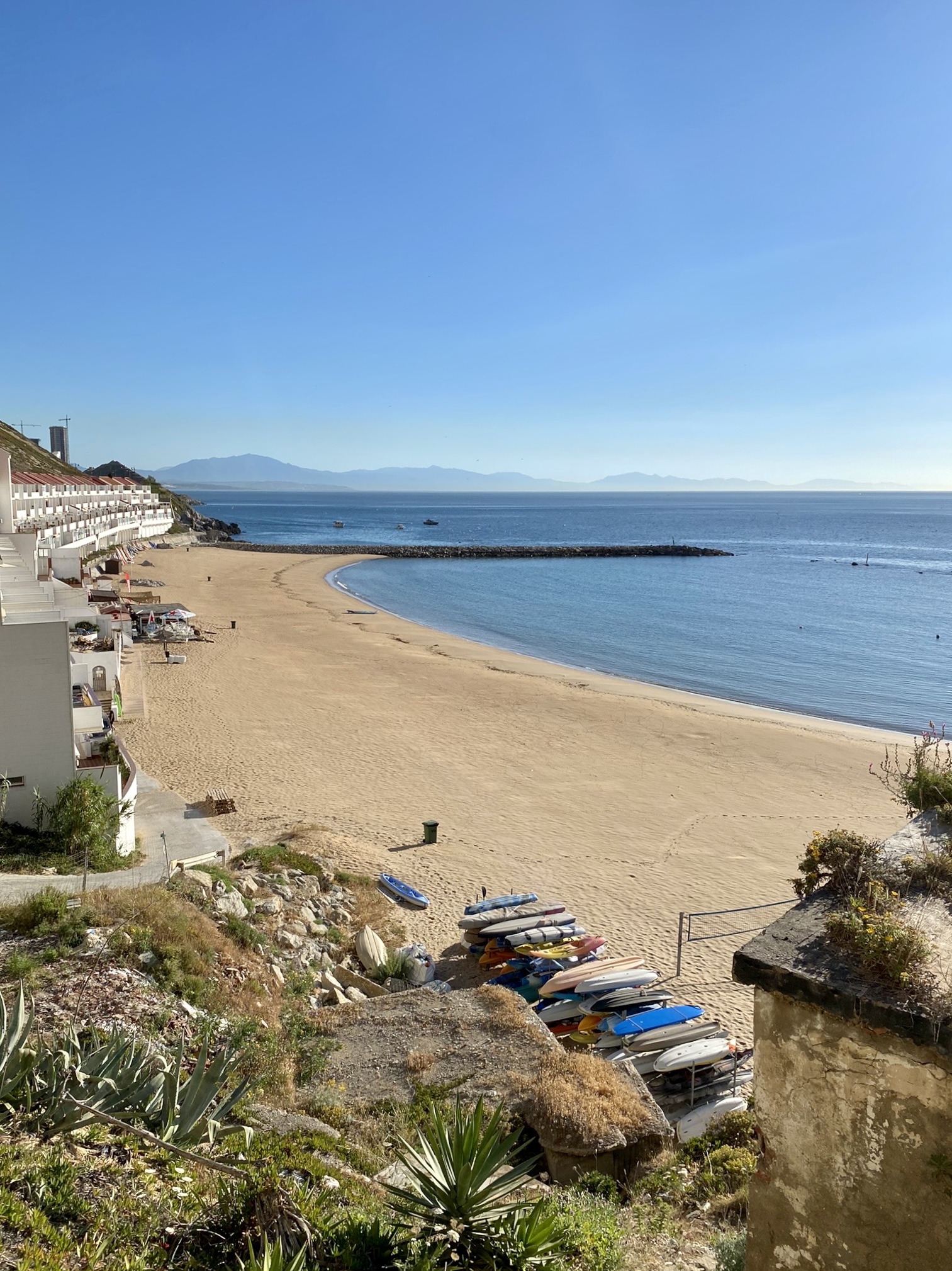
Just outside the swim area we saw lots of splashing in the water, with seagulls dive bombing into the sea. As our eyes adjusted to the glare, we noticed there were hundreds of dolphins jumping about! It looked like the gulls were defending their turf and the dolphins were messing with them. Almost like a game of tag, or a vicious game of whack-a-mole (whack-a-dolphin?).
Just past that part of the coastline, we reached a tunnel. It turns out that you cannot circumnavigate the Rock by foot!
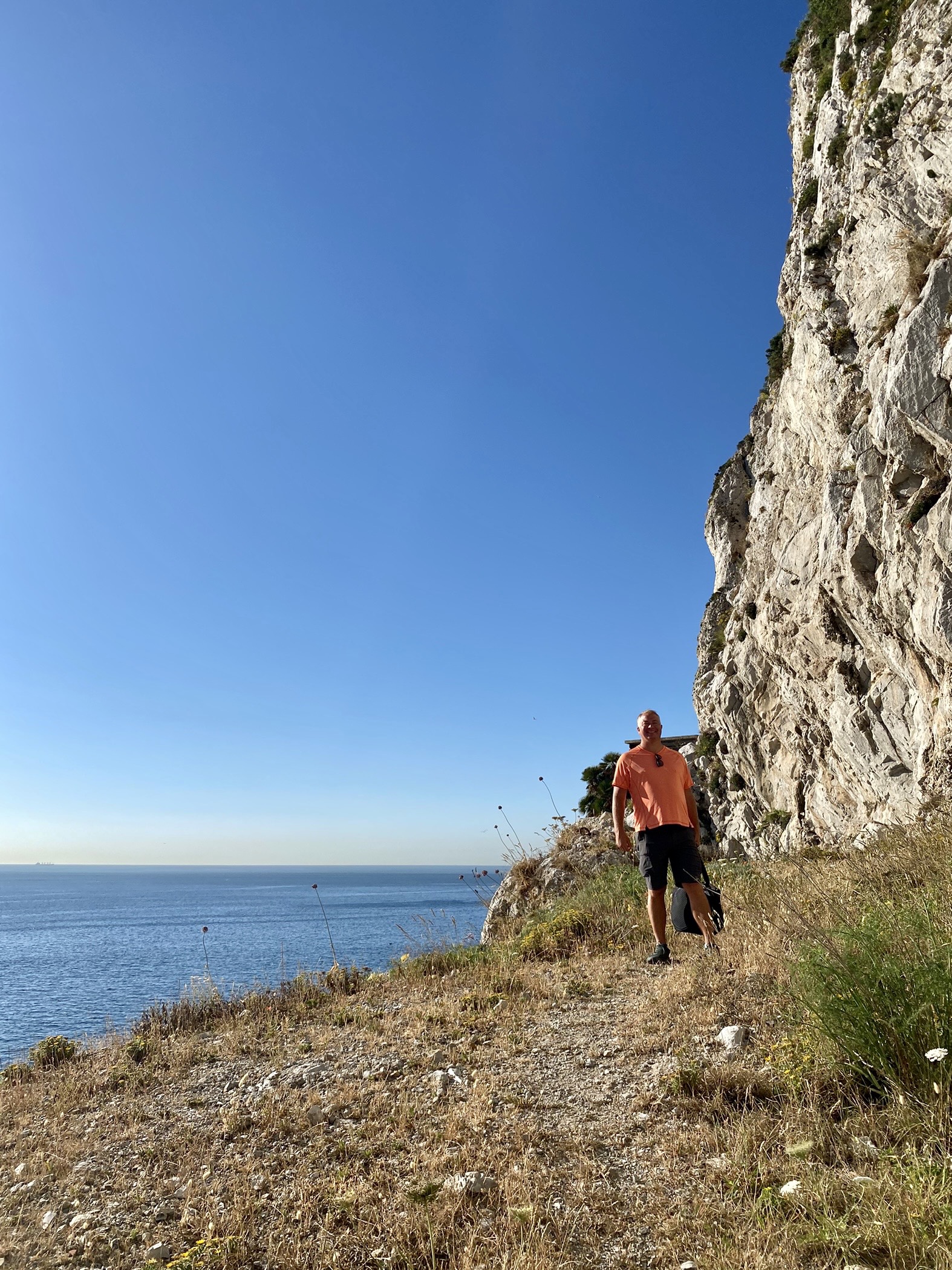
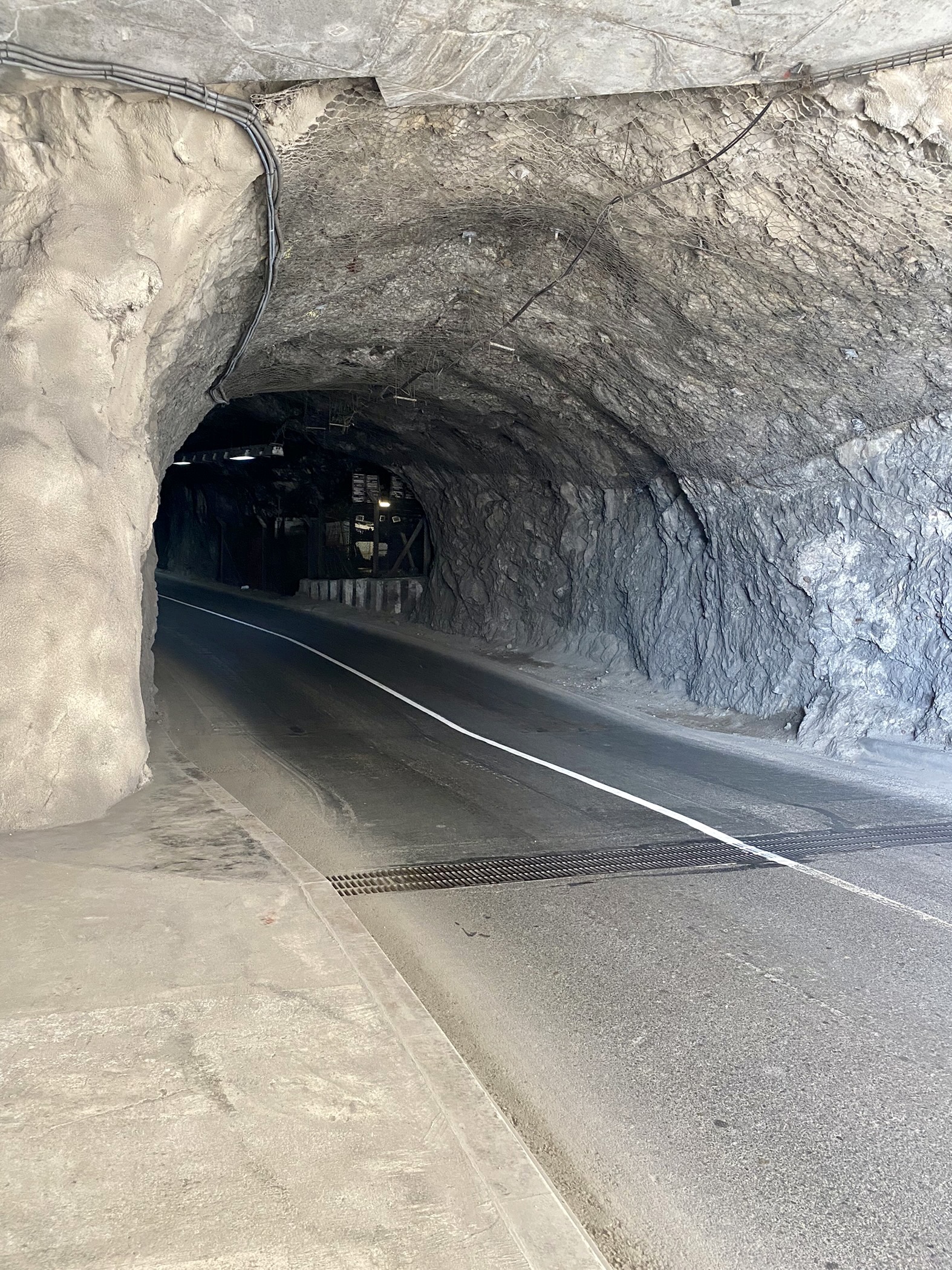
This left us in a bit of a pickle. Gibraltar uses the pound, but it is the Gibraltar pound, which cannot be used in the rest of the U.K.! We only had large euros and dollars in our pockets, and while the bus accepted Euros, they only accept exact change!
We weighed our options and decided to relax at Sandy Bay for a bit to figure out how we wanted to proceed for the day. After all it was a gorgeous, clear day and we were in need of a cold drink. So we hung out at the local beach shack and had a round of beer.
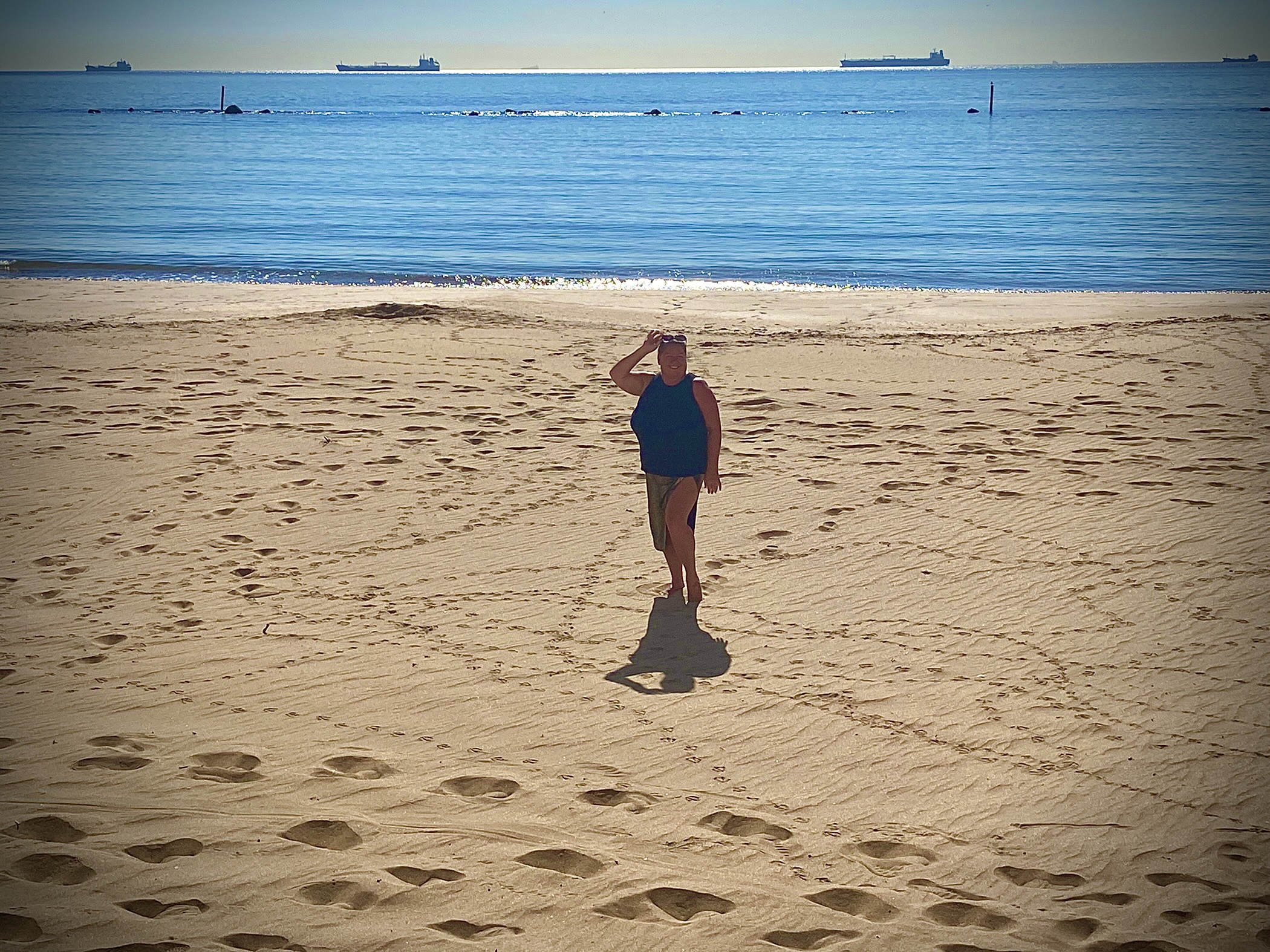
I dipped my toes in the water but it was too cold for a frolic. The water was very clear though!
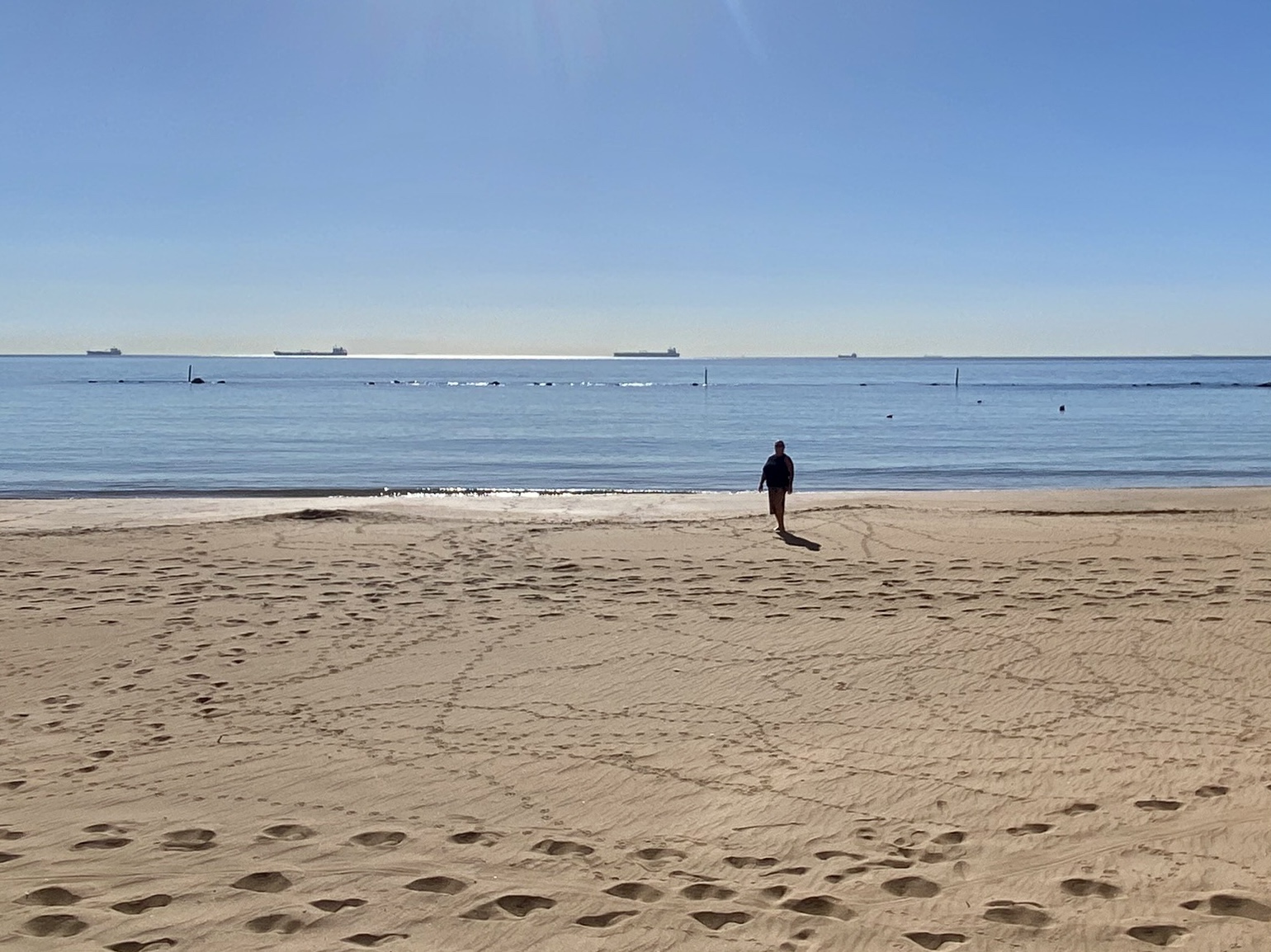
After a relaxing morning on the patio overlooking the Mediterranean, we decided to walk back to town. It worked out because throughout the entire walk, the bus never passed us by. We stopped for lunch at an Indian restaurant near a marina and walked about town a little longer.
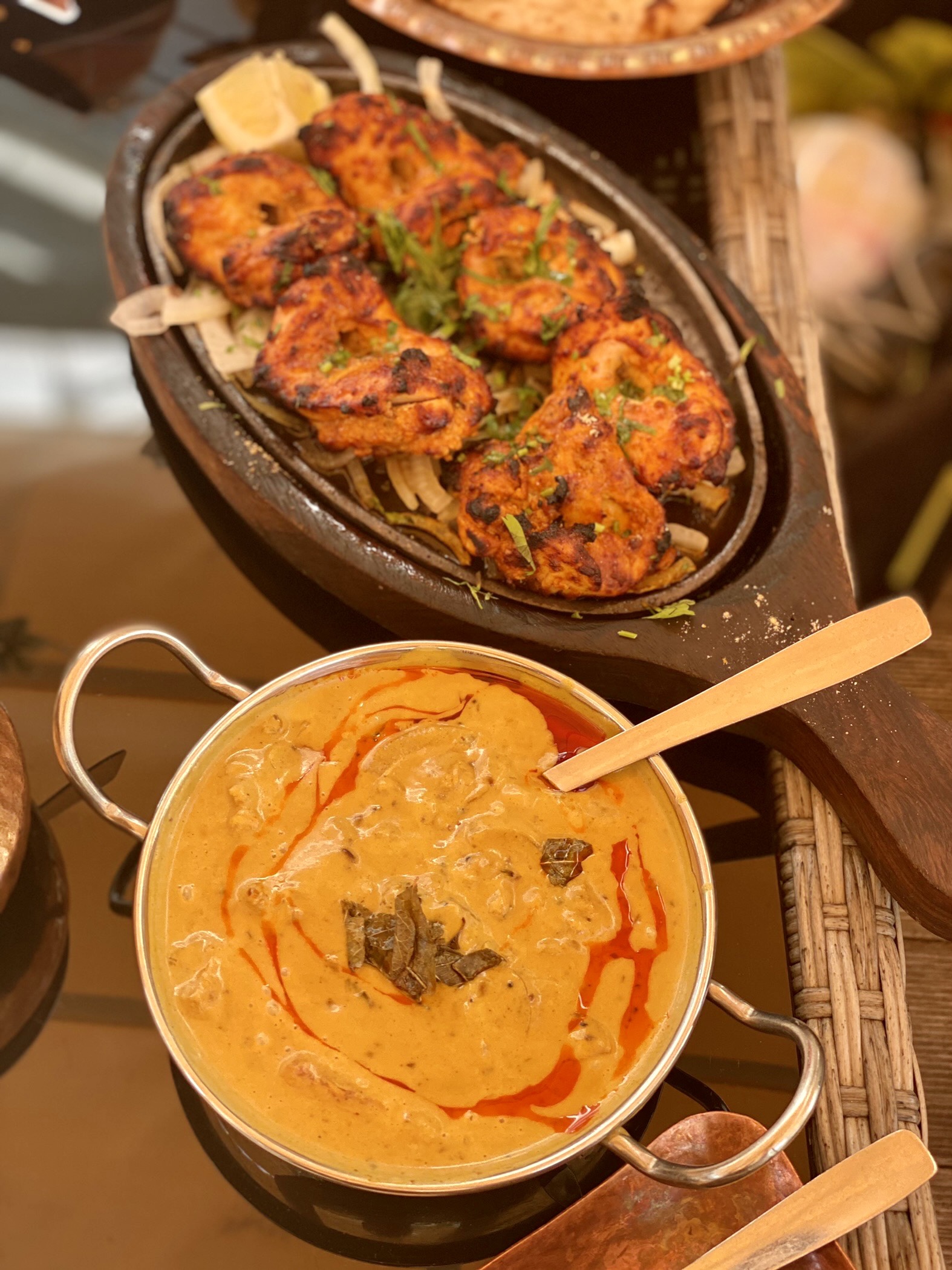
We put in 10 miles but Corey never made it up the Rock. A little disappointing but I think he was saved from having to deal with the thieving monkeys at the top.
Lisbon (Lisboa), Portugal
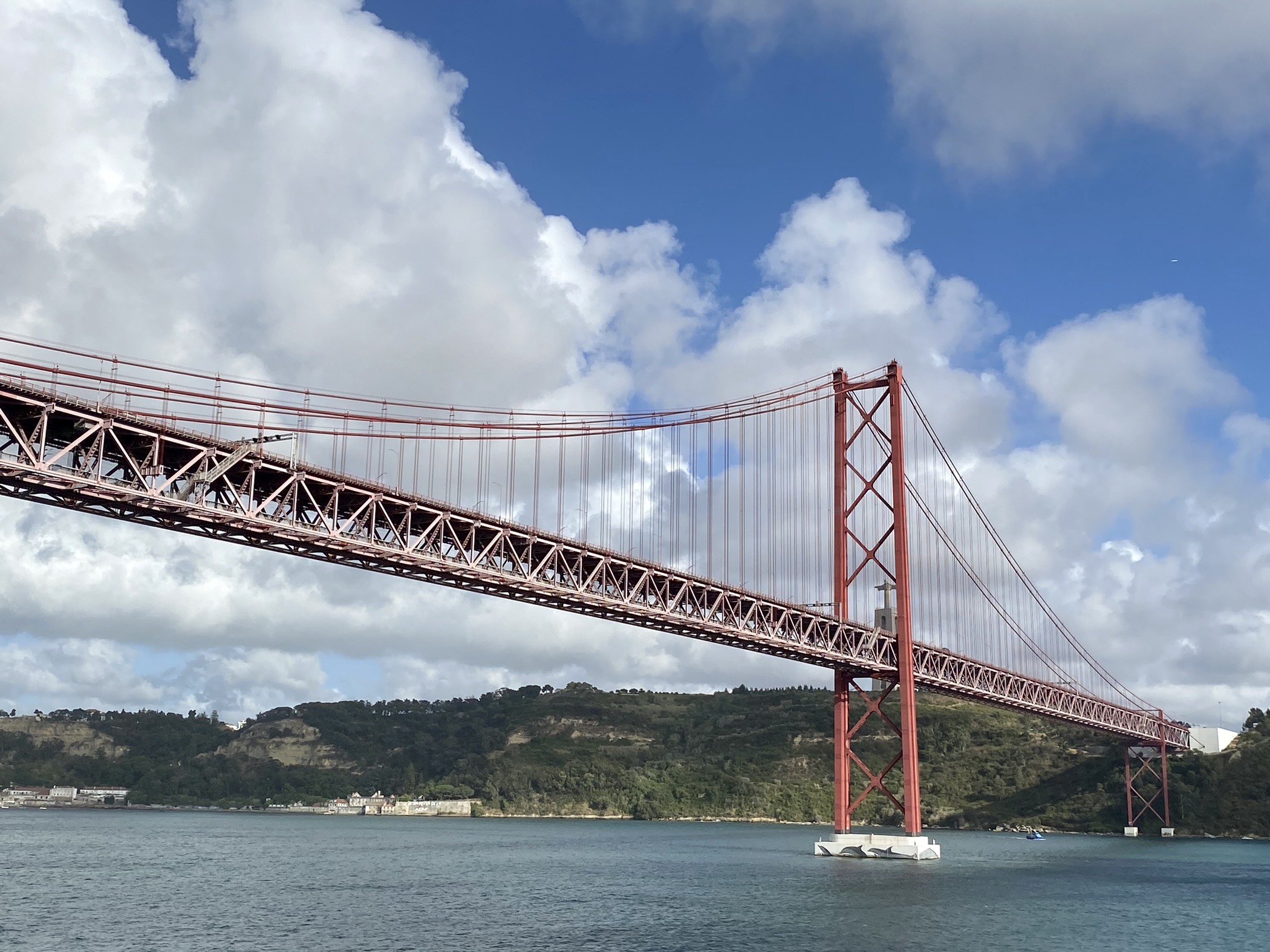
How the day started:

How it ended:
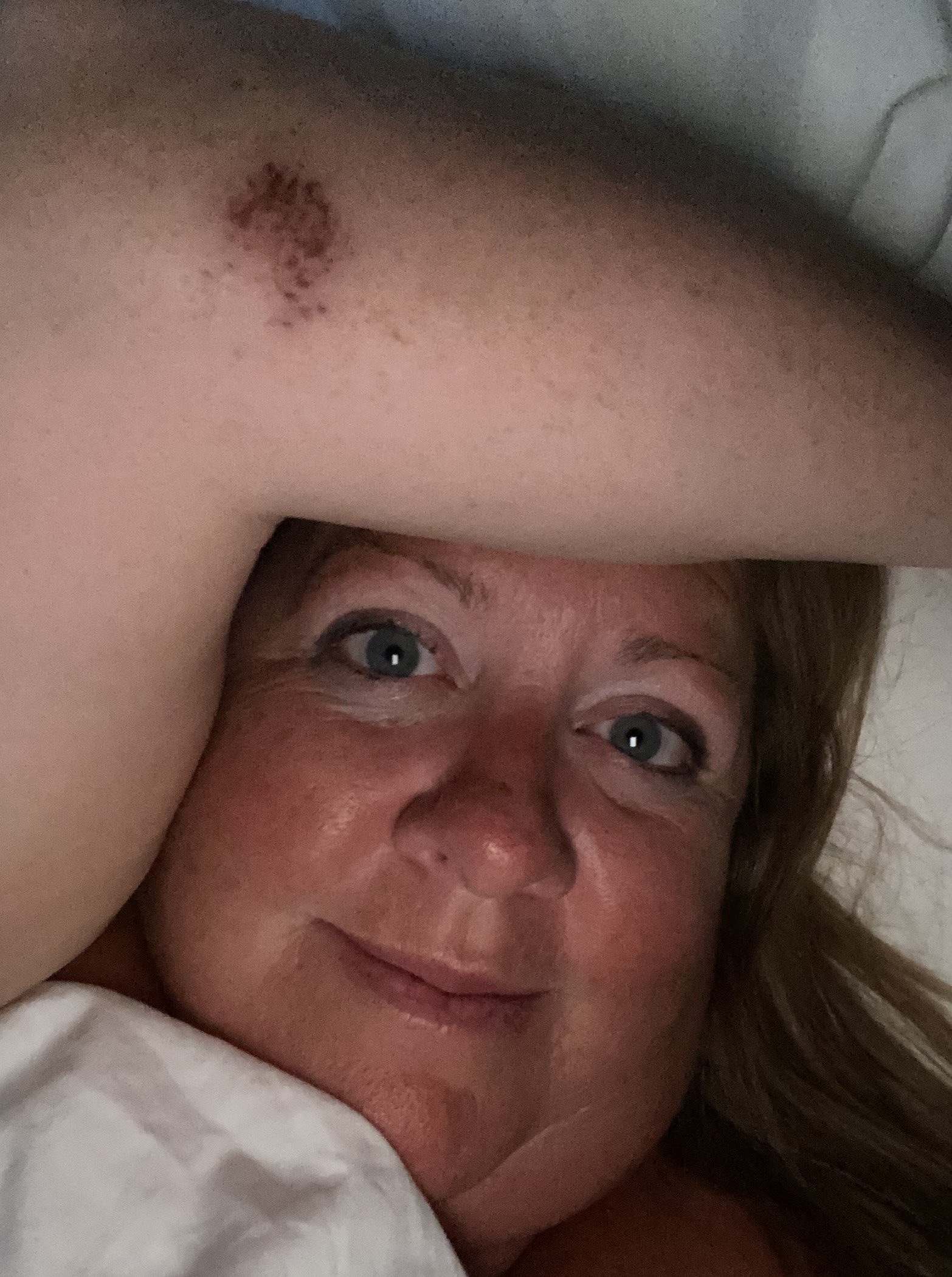
Lisbon beat me up a little bit, but we had a good time. Let’s go through the day!
We slowly sailed into Lisbon on the Tagus River and under the April 25th Bridge, which is designed after the Bay Bridge, but painted the same orange of the Golden Gate Bridge (both of San Francisco).
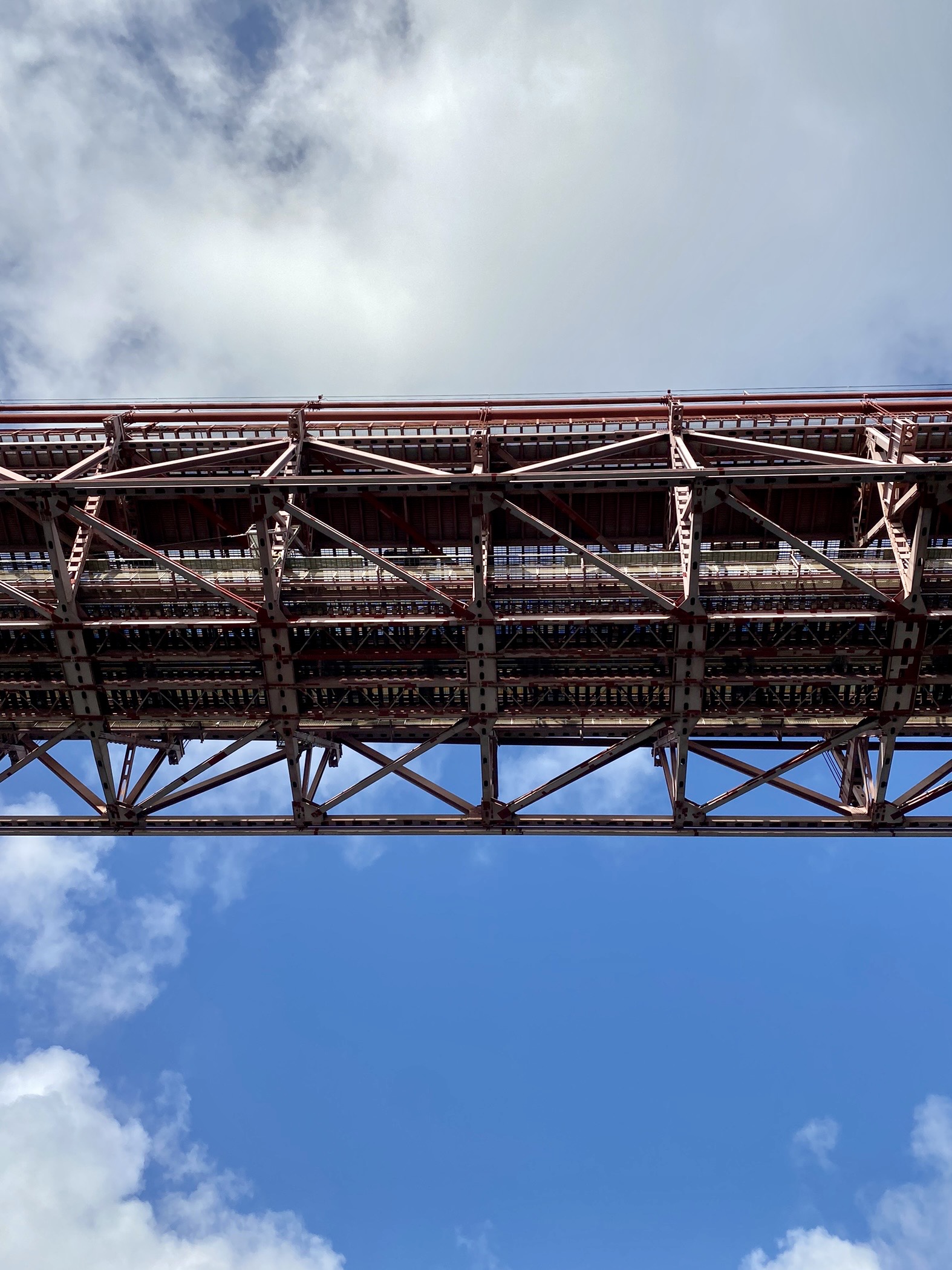
Lisbon spans over seven hills (like Seattle!) and is known for its steep inclines about town.
The one item on our agenda was a belated birthday lunch at Lumi, a gorgeous rooftop terrace with incredible views.

But to get to views means climbing the hills, so Corey put together a transit plan.
Lisbon has some historic trams that run up and down the hills, navigating the narrow alley-like streets. We stopped first at the metro station to buy a daily transit pass, meaning we could hop on and off whatever transit we pleased.
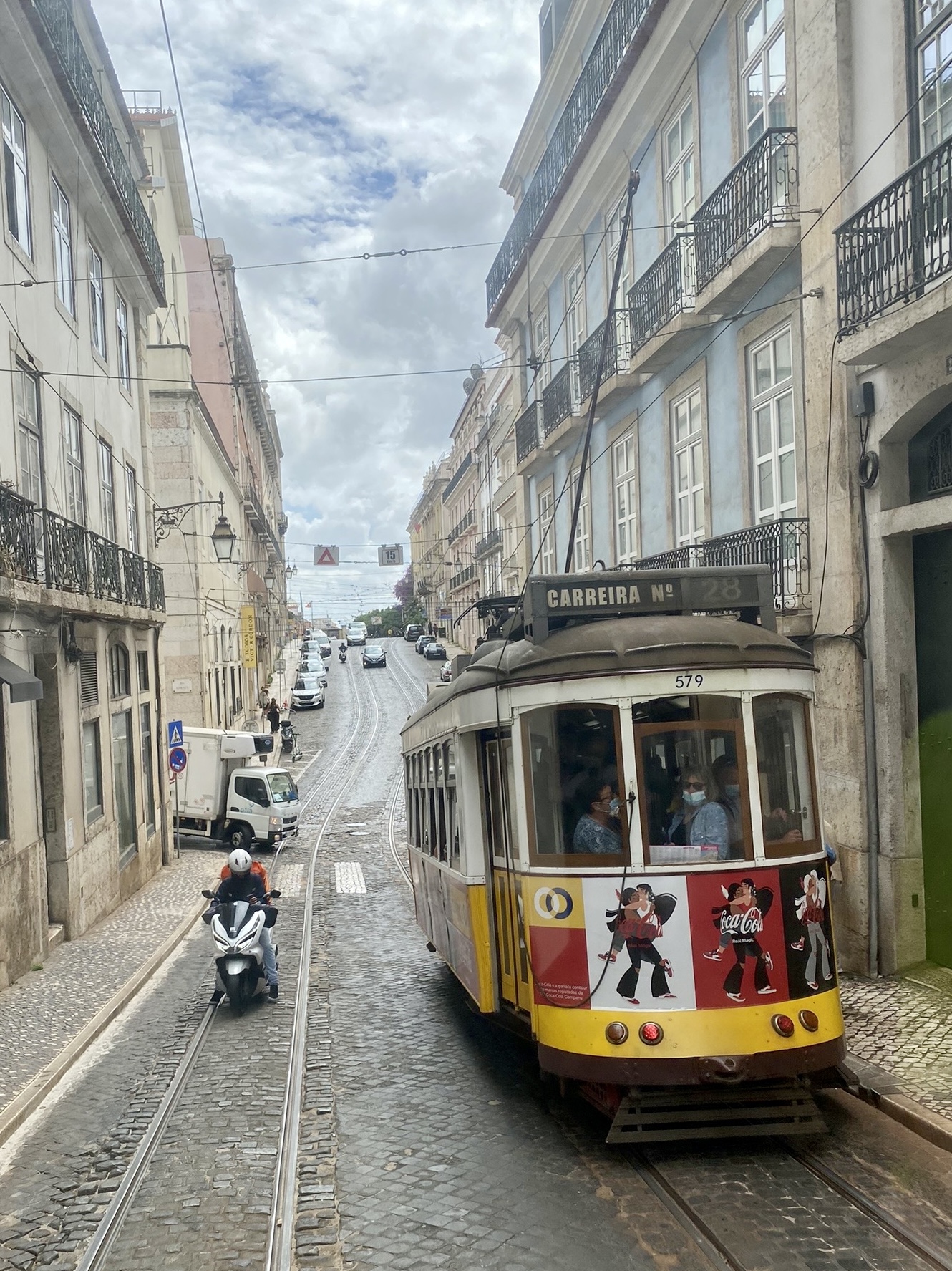
Tram 28 is the must-see for tourists. We queued up at the first stop with about 100 people in front of us. The line moved pretty slowly even after several cars had gone by. Once we got toward the front of the line we noticed that people weren’t boarding because they wanted a seat. How silly! I asked ahead of us and about 30 people said they wanted to wait for the next one. So we skipped ahead and stood in the back of the trolley.
The bay window in the back made it feel like a thrill ride. I created a video on Insta. Check it out!
We took the trolley to the last stop and walked over to Lumi for our lunch reservation.
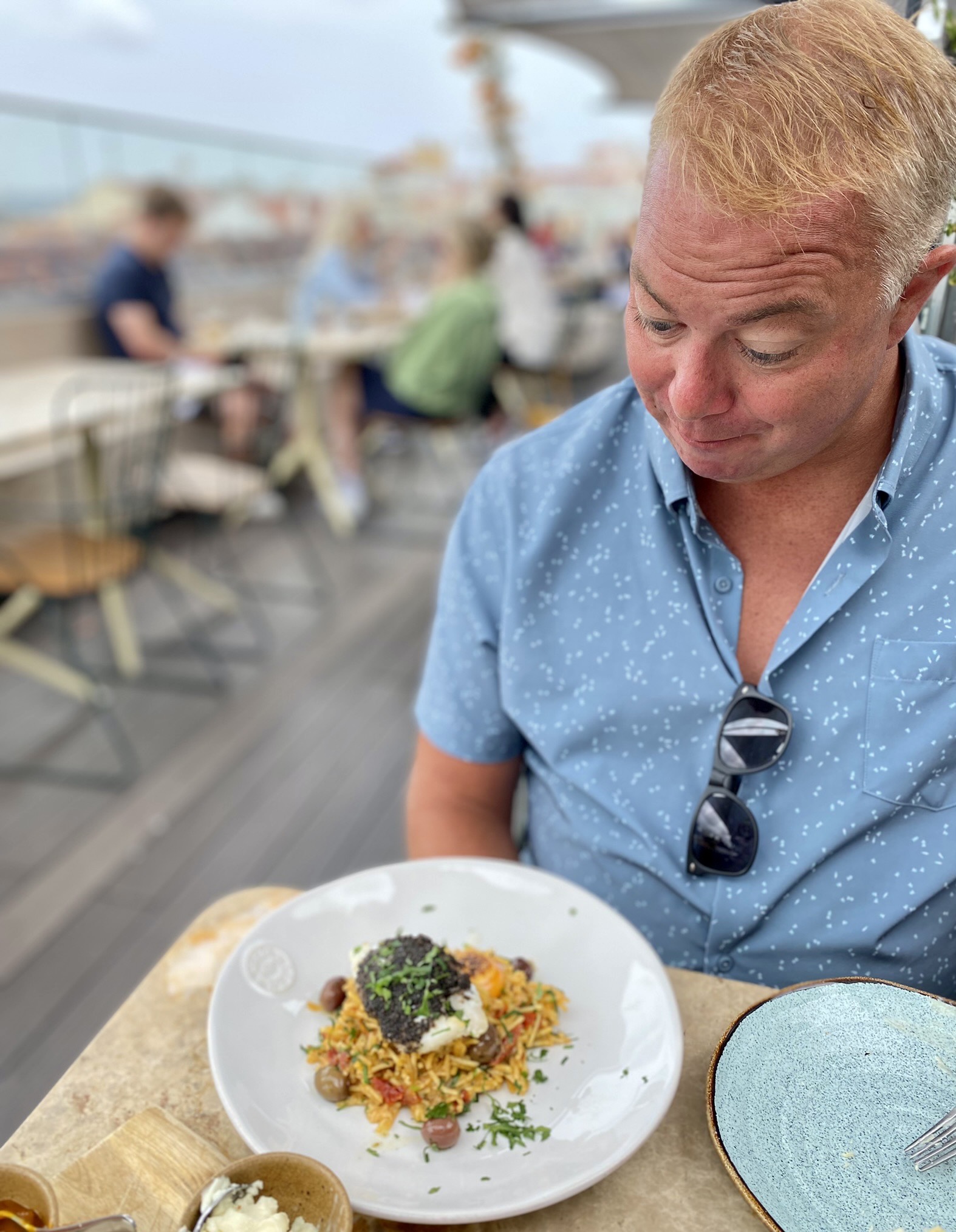
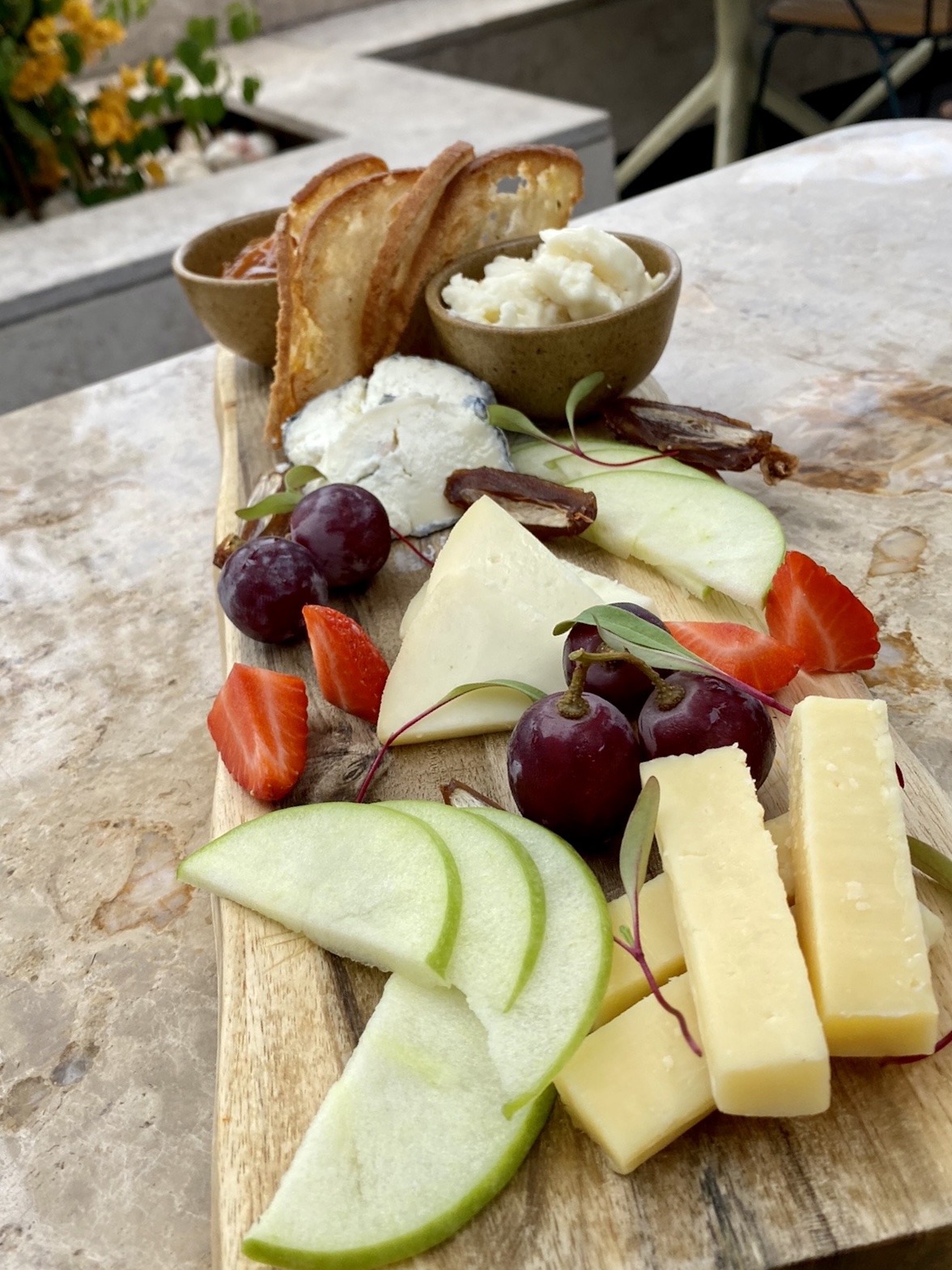
Thanks Jake for the voucher to this place! It was so nice to extend my birthday celebrations into summer this year.
After lunch we walked to a popular viewpoint a block away and admired the city views from a different angle…and with some churros and coffee. There were some other interesting vendors hawking food and drinks in the park. We picked up some white sangria.
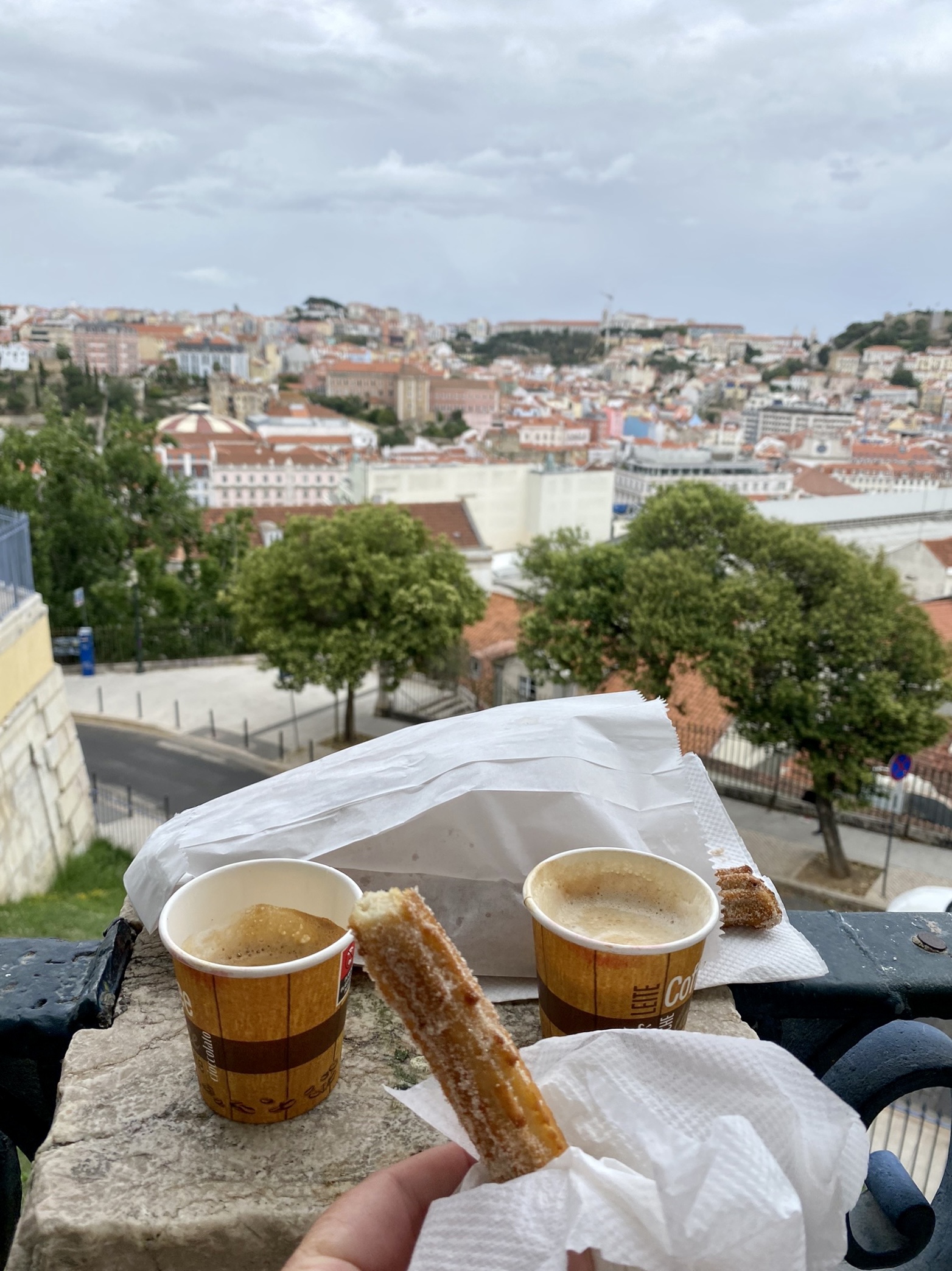
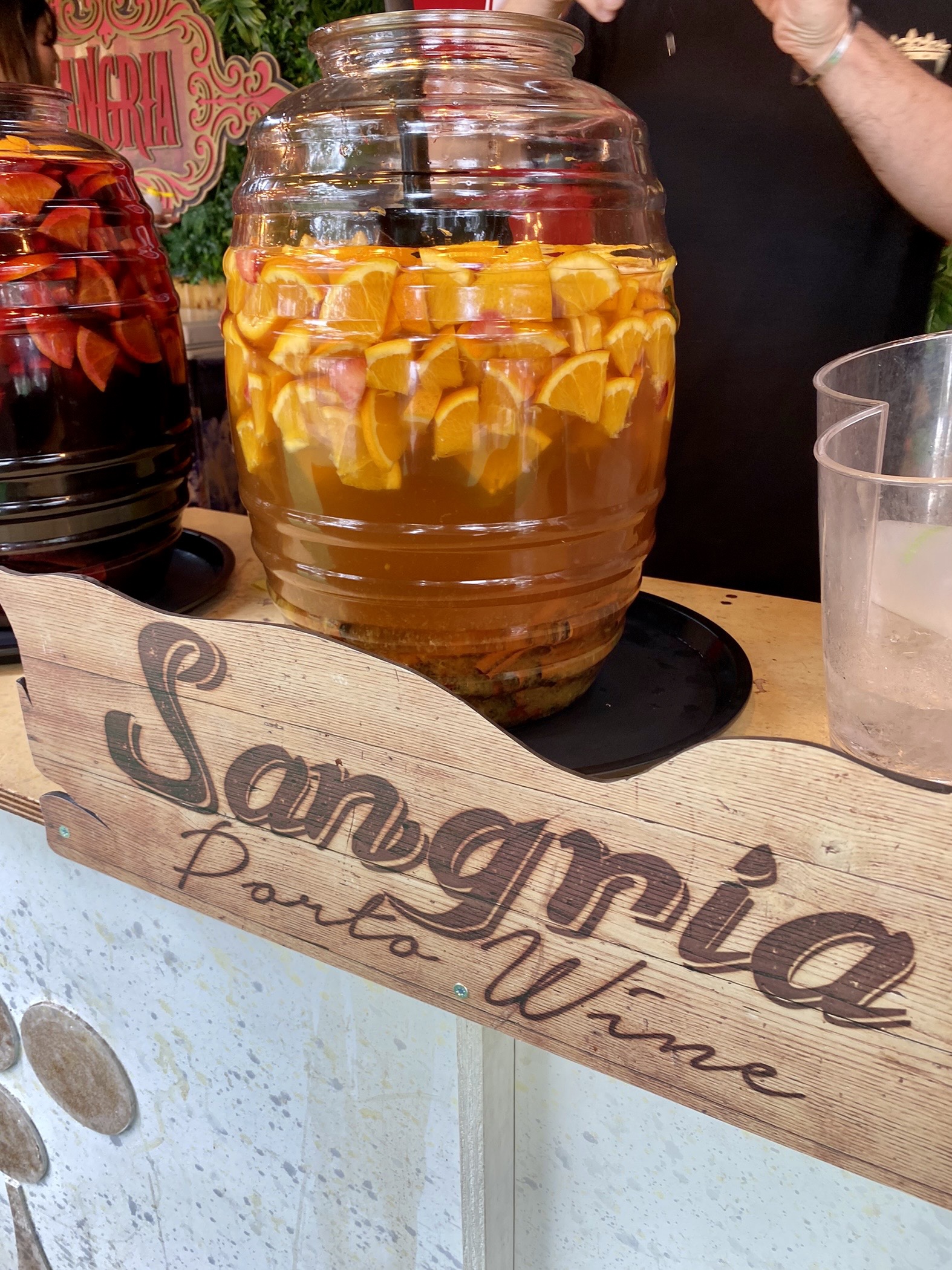
We took one of the historic funiculars down the hill (Funicular Gloria, dating back to 1885), and walked around some of the plazas (Restauradores, Rossio), and ended up on Rua Augusta, essentially a shopping mall filled with tourists, pickpockets, and weed dealers. Stopped off in a couple seedy bars the size of a closet that served shots of sour cherry liqueur, a local specialty called ginjinha. A shot cost about a euro each.
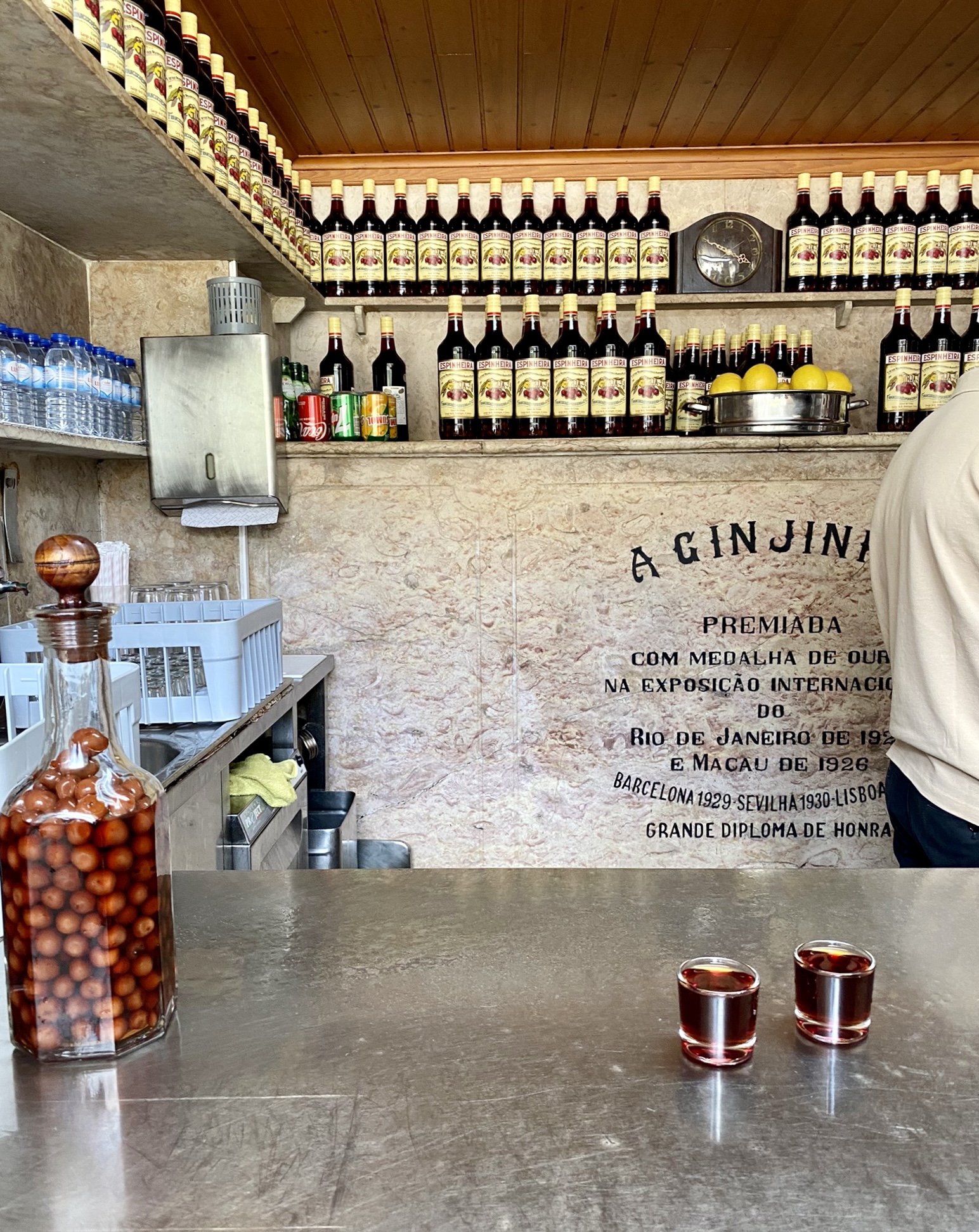
With a little time on our hands, we went to yet another historic means of going up and down, a 1906 elevator called the Santa Justa Lift.
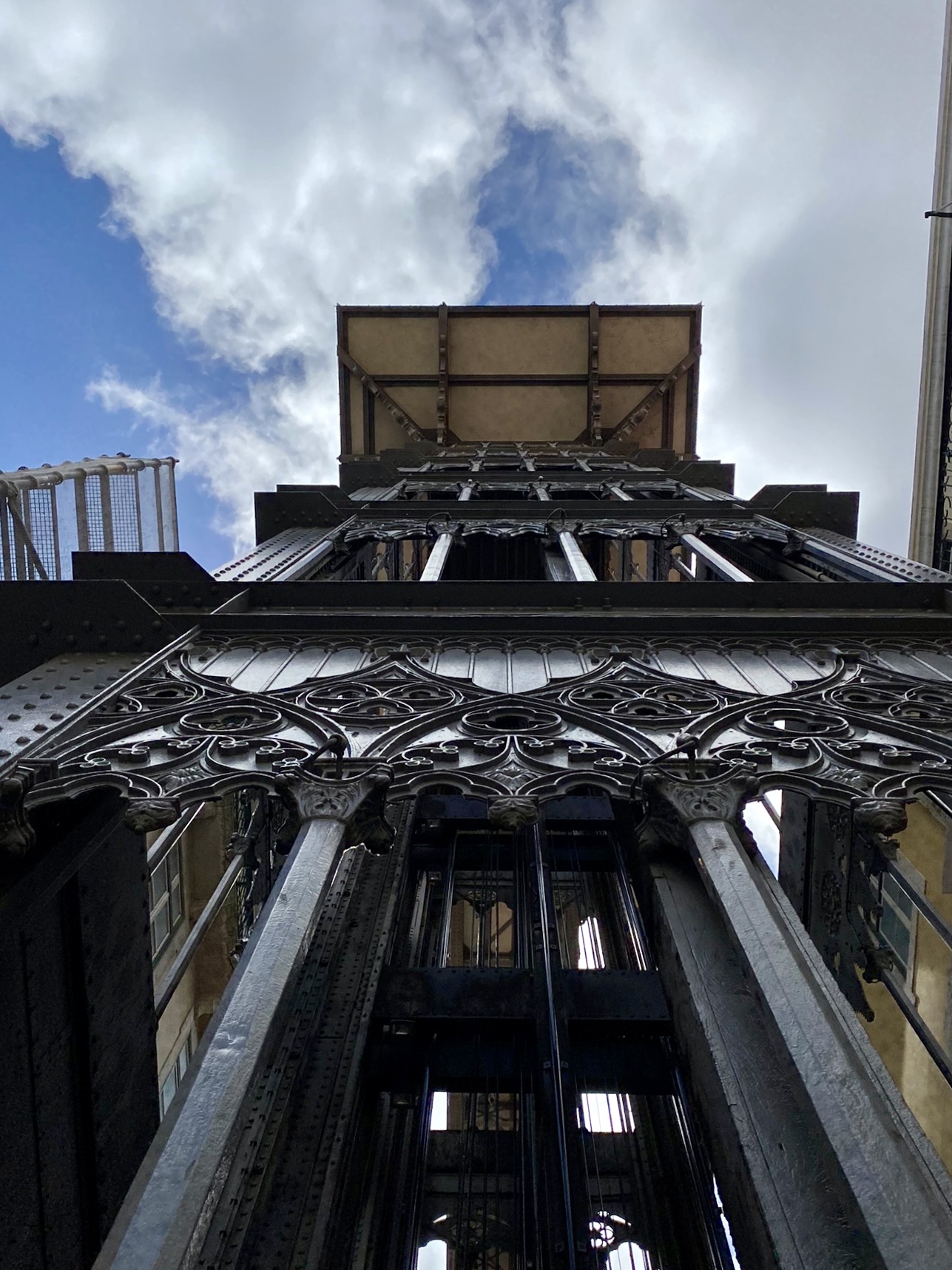
The elevator looked beautiful, but was best enjoyed as a landmark and not as an experience. After our 45 minute wait and one minute ride, we enjoyed the views from the top, then scurried down the hill and back to the ship.
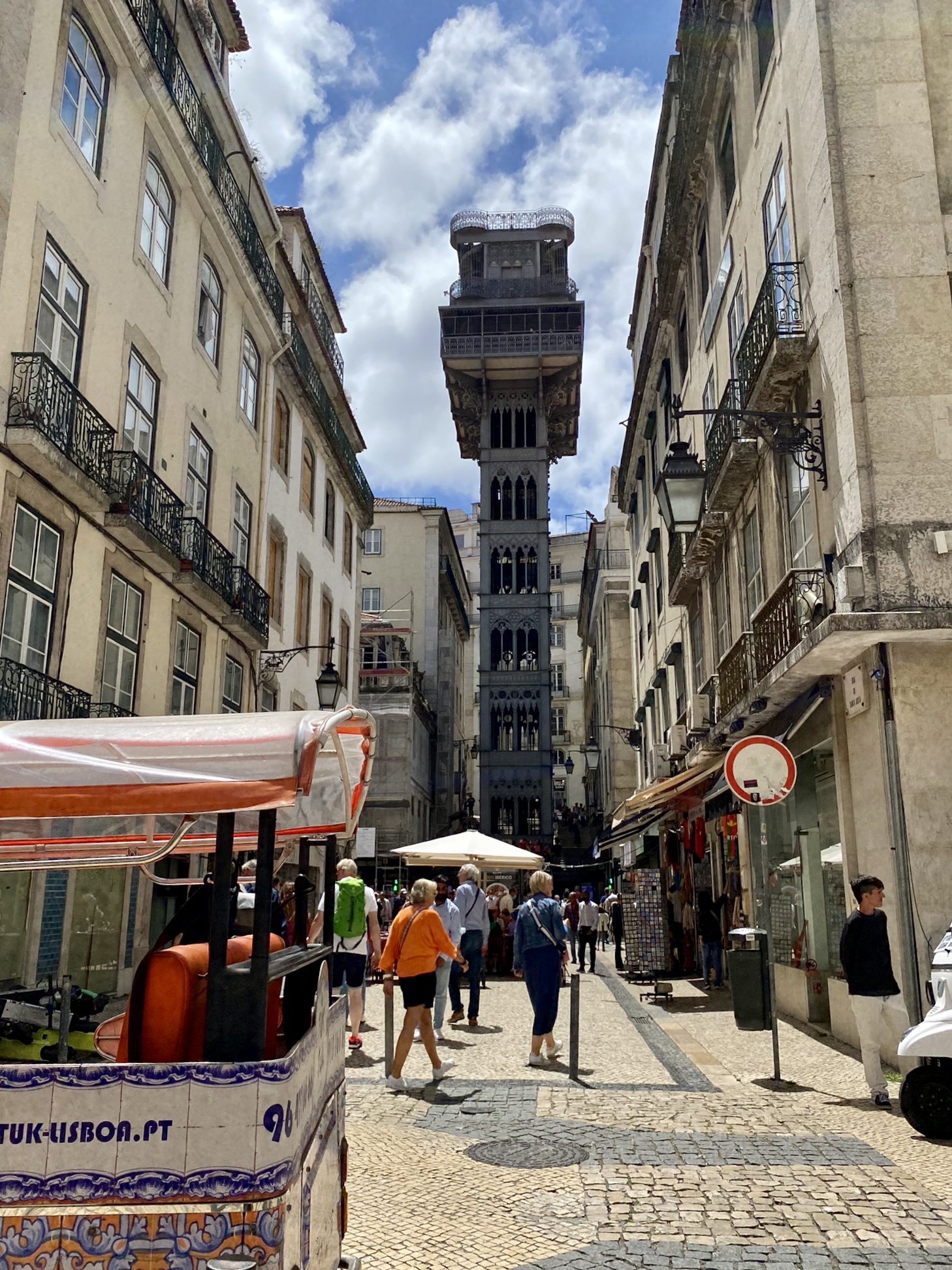
While in the process of scurrying across the street, I fell. It was one of those “oh shit” moments where my body stretched out perpendicular to the road and I slid into the ground like I was stealing third base. Luckily, I didn’t break anything, including my phone in my pants pocket. But I don’t think my pants or shirt will recover from the fall, and my pride was only slightly dinged.
A glorious sail away lifted my spirits, so here are some beautiful photos as we left Lisboa.
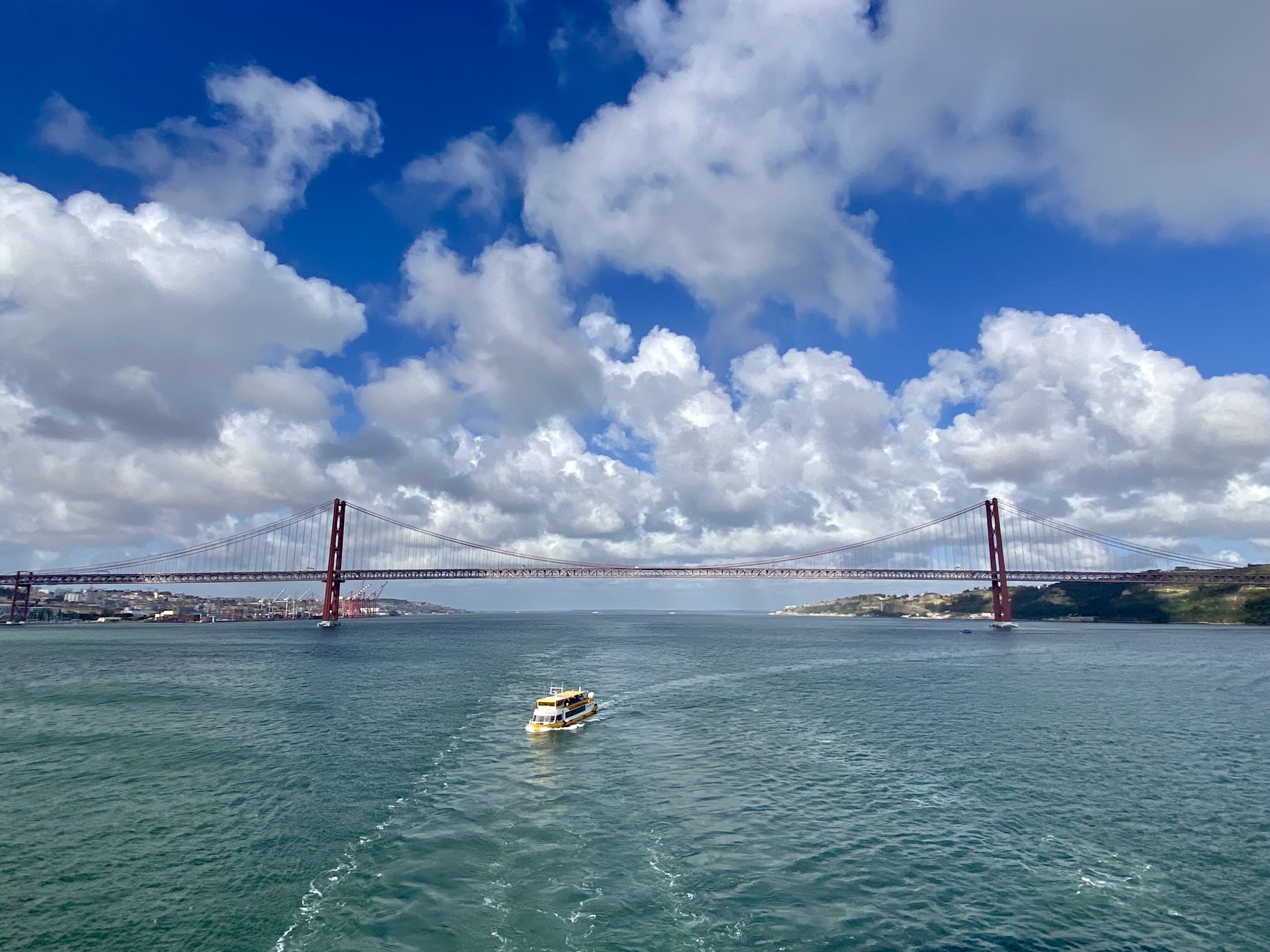
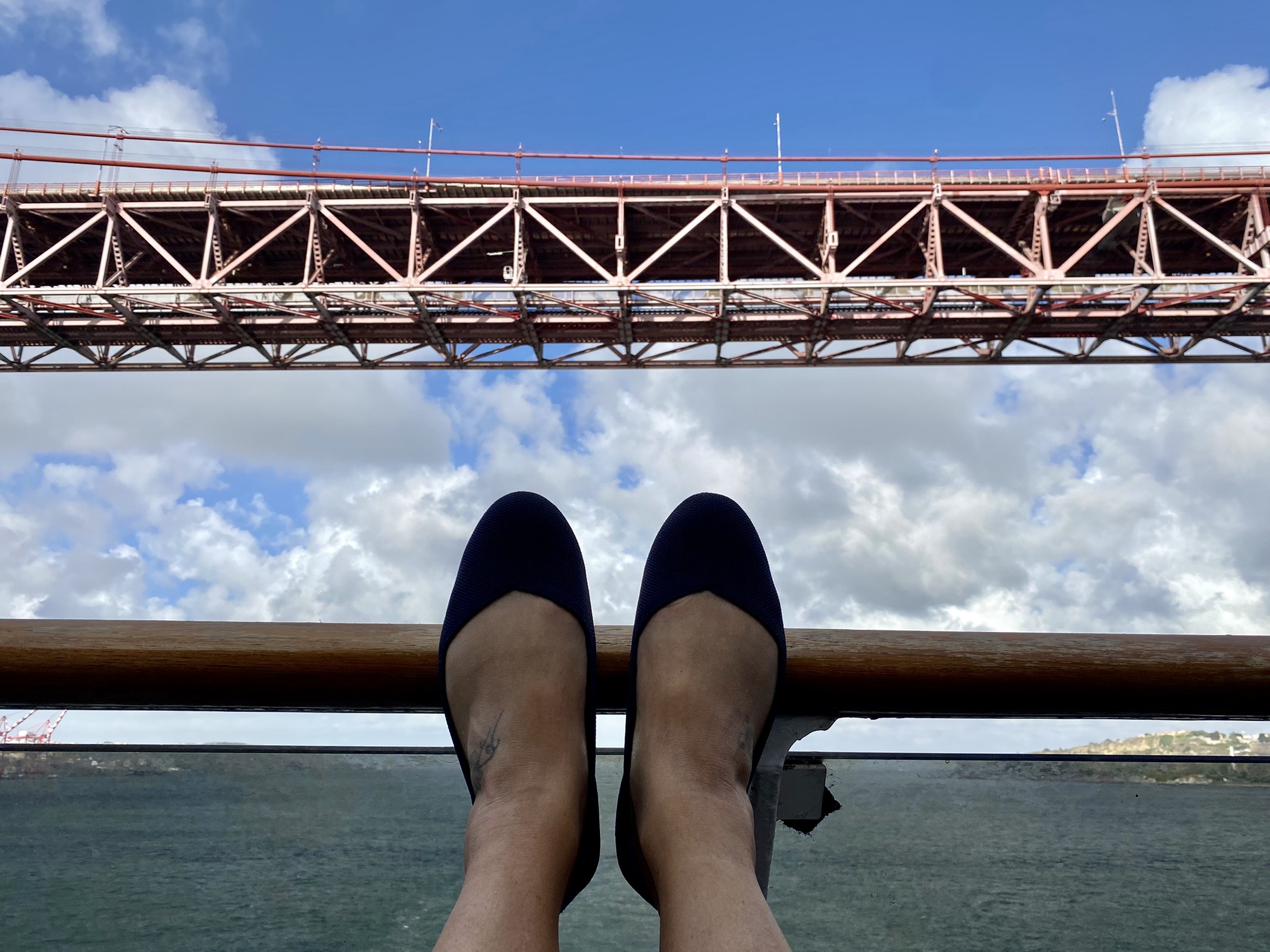
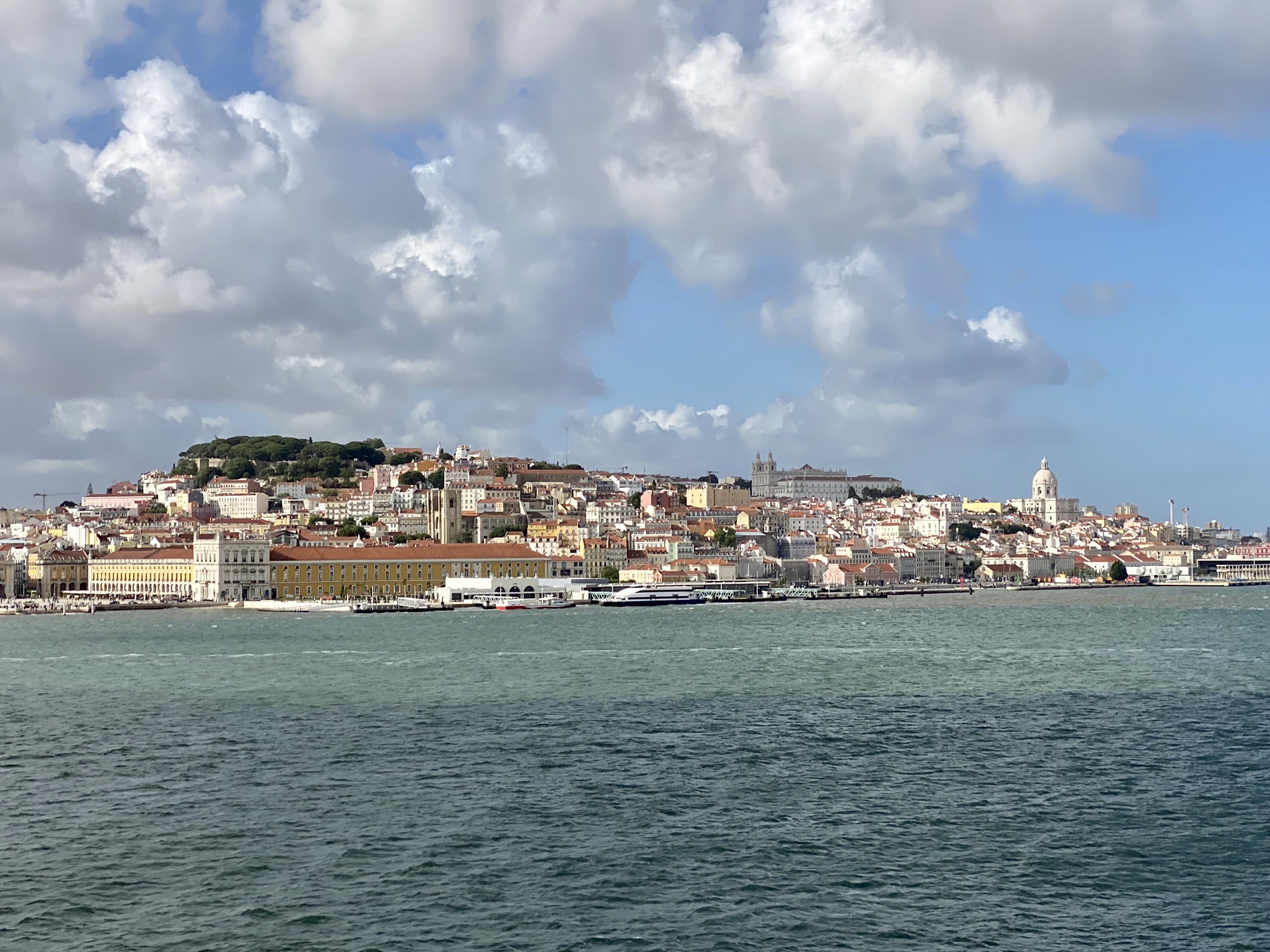
Porto (Oporto), Portugal
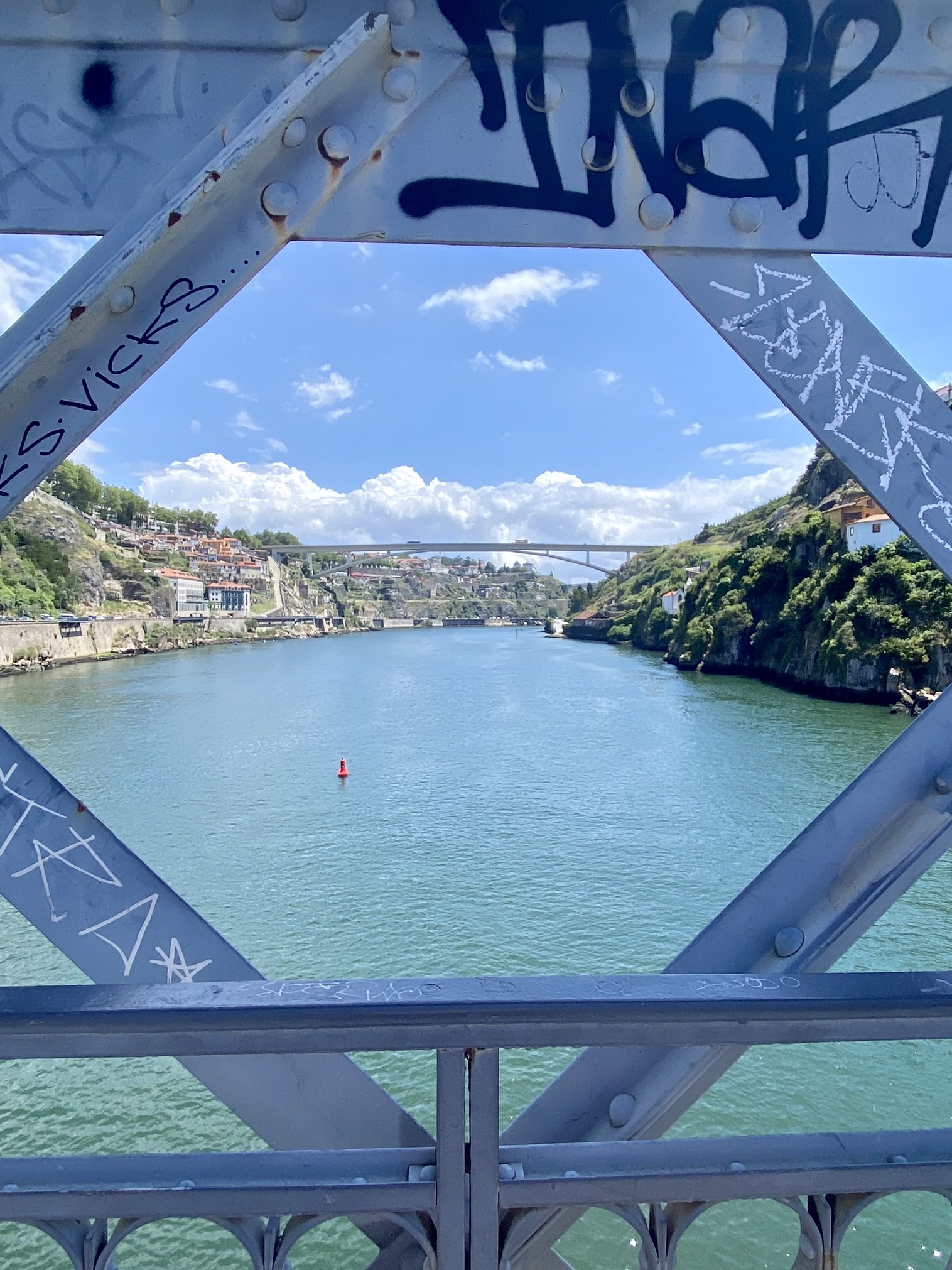
Wow. Once we sailed into Porto and started walking around, Corey said “wow” out loud at three three times. It’s true. Porto is a picturesque city. Everywhere you look there are beautiful pieces of architecture: churches of various ages, train stations, old administrative buildings, and more.
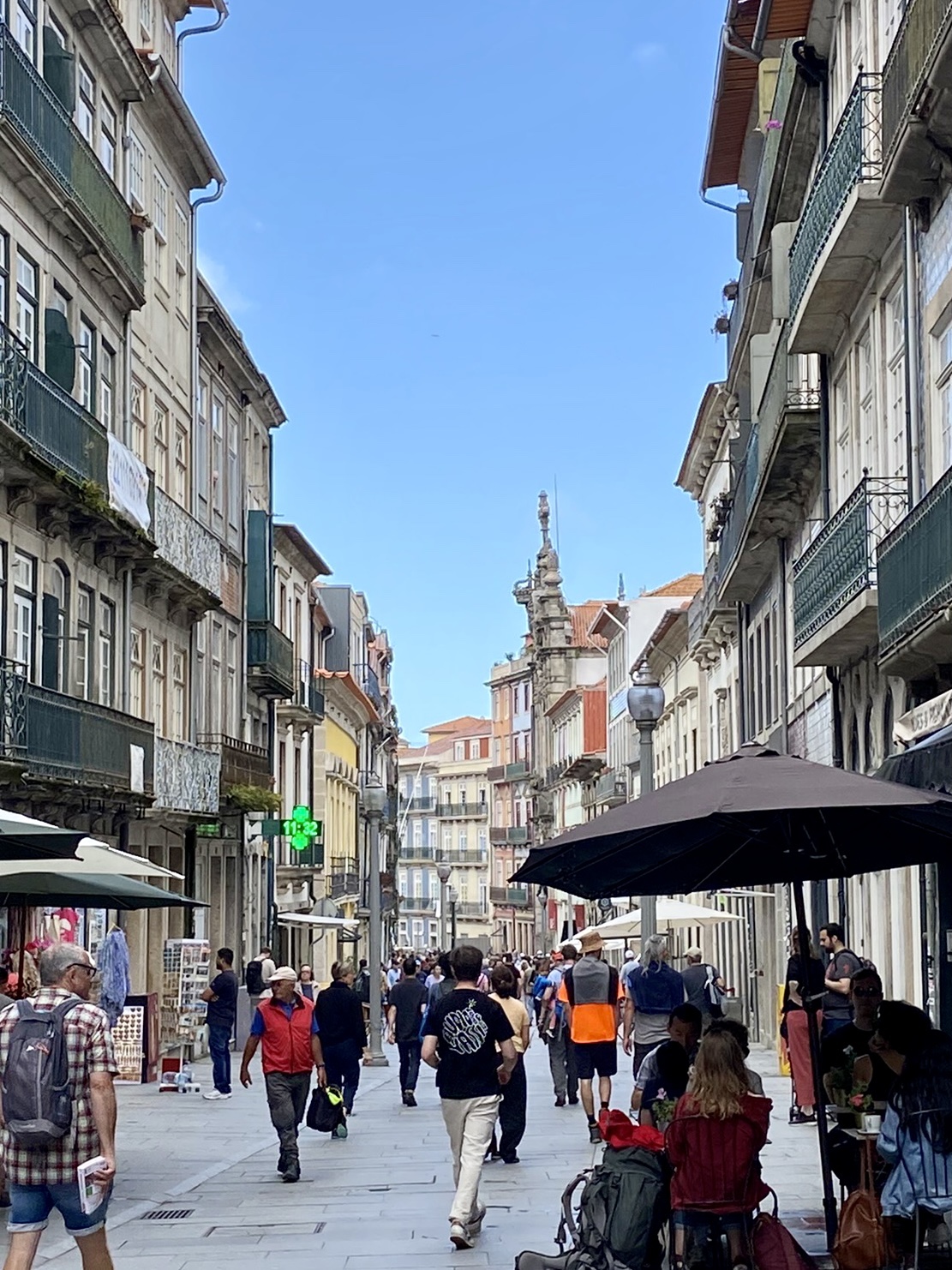
Porto has been a favorite destination of mine for a long time. It is the only port of call so far where I felt tortured to go back to the ship.
From the ship we walked to the train station and struggled to figure out the machine to buy a daily pass. Apparently the tourist passes are not sold at the machines or online. Perhaps at the airport? Whatever we bought, we were able to use it on the metro and bus throughout the day without getting arrested.
We followed the path provided by a Lonely Planet walking tour, and slowly made our way down toward the Douro River.
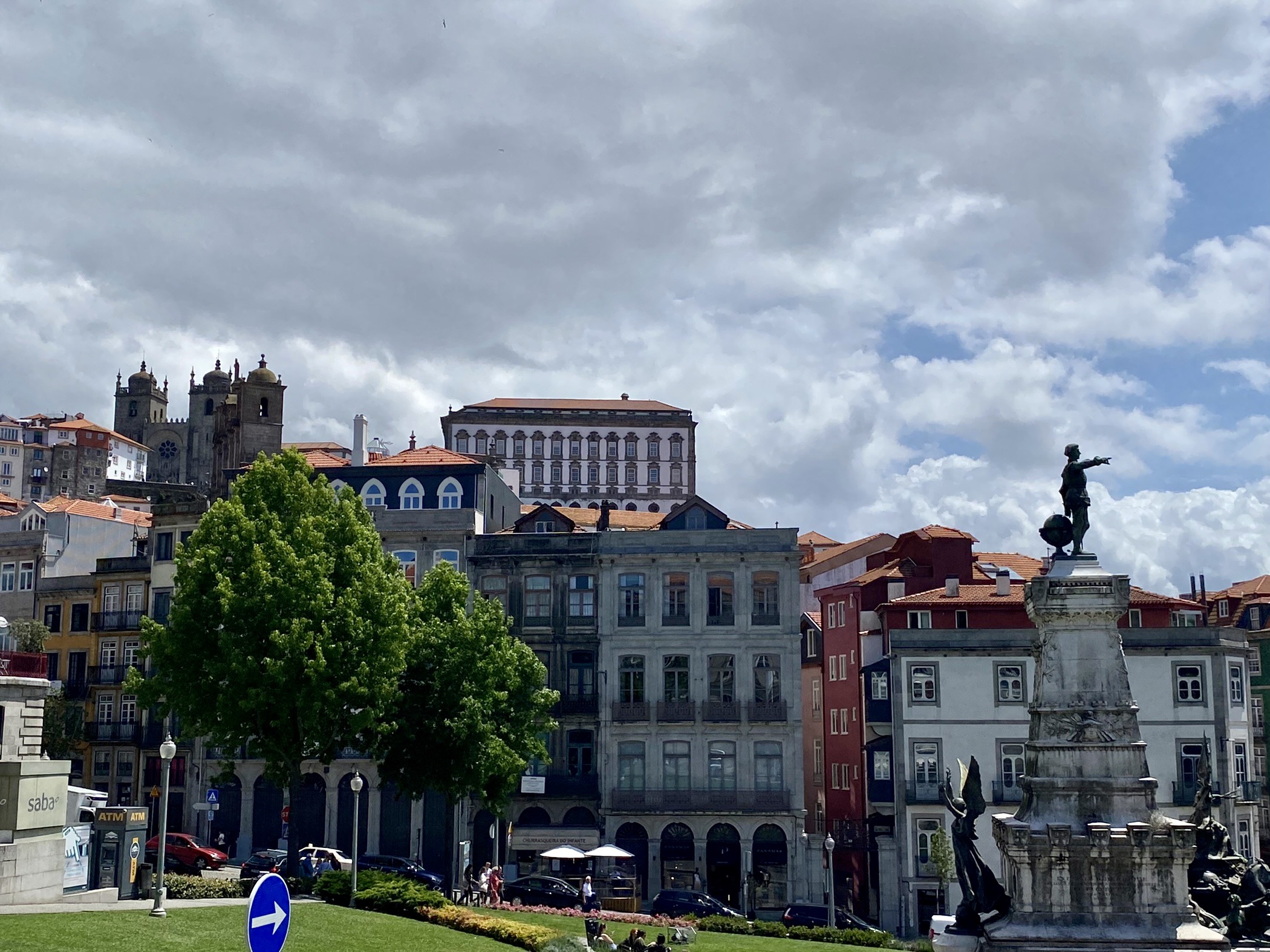
On the way, we stopped by the Port Museum (Museu do Vinho do Porto), which we highly recommend whether you know a little or a lot about port! It was a concise exhibition of the geography, history, and type of grapes used in making port as well as wine from the Douro Valley. The best part was the robot port pourer!
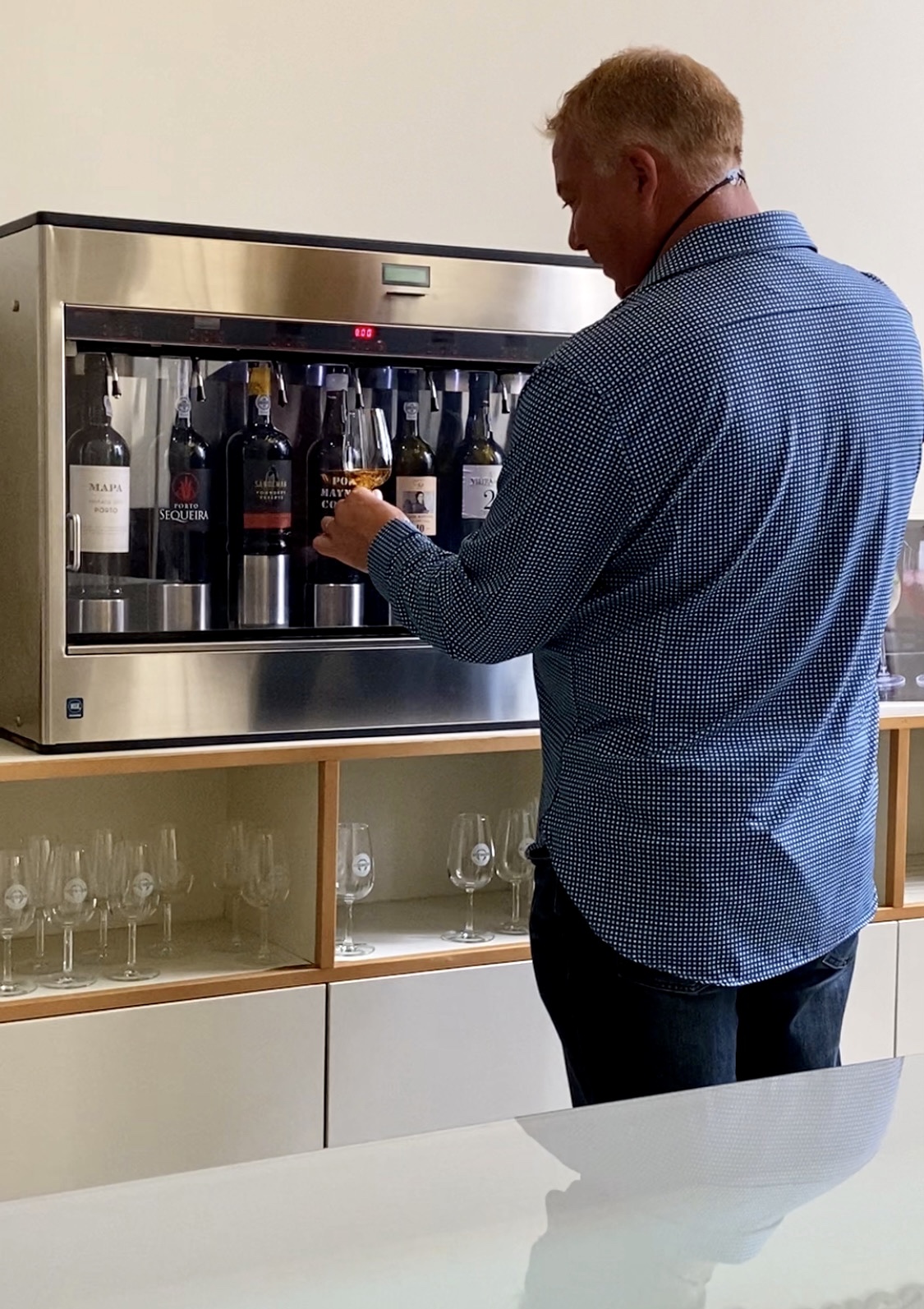
After trying a few ports, we walked across the river, which is where the port houses are located.
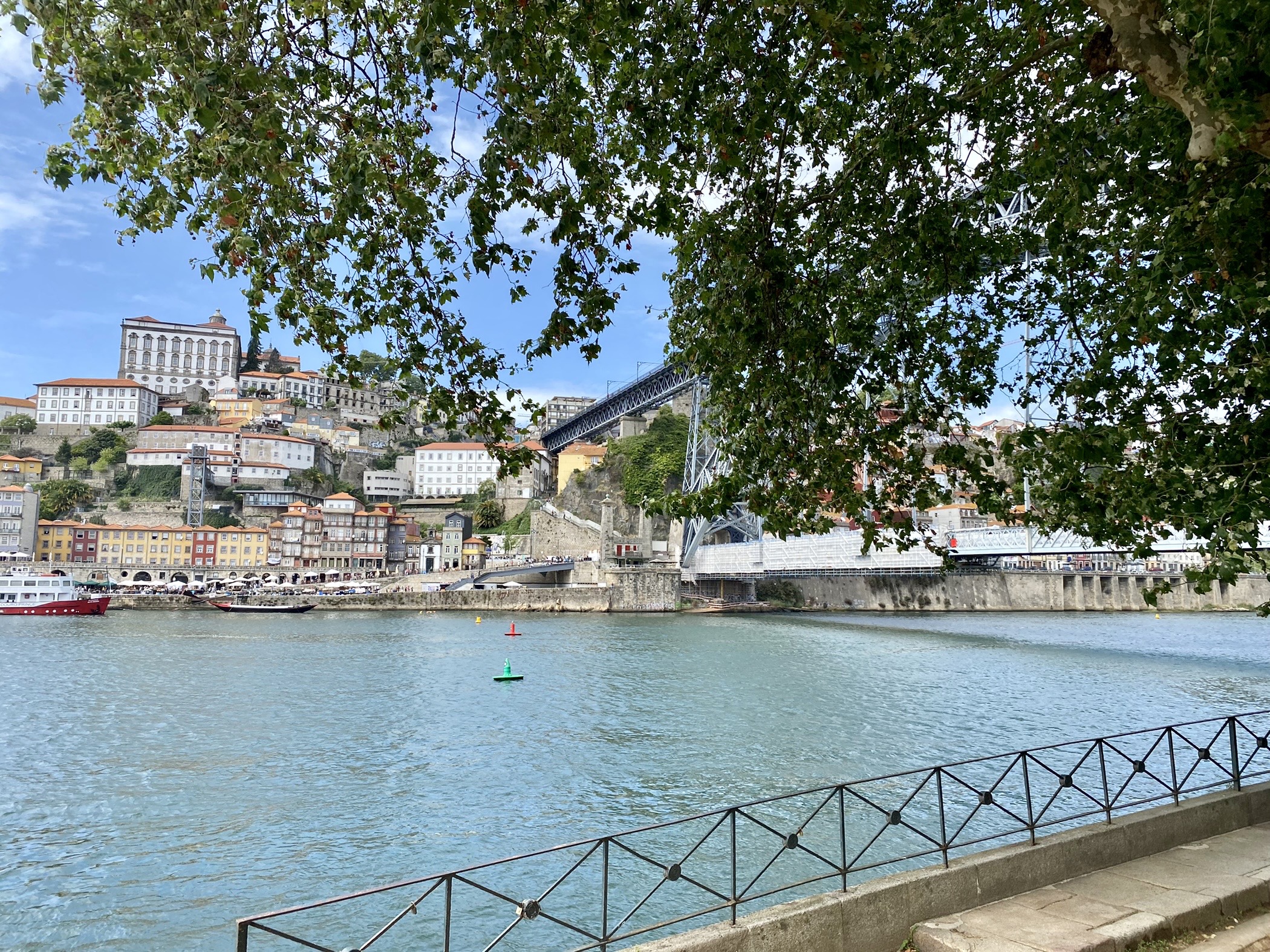
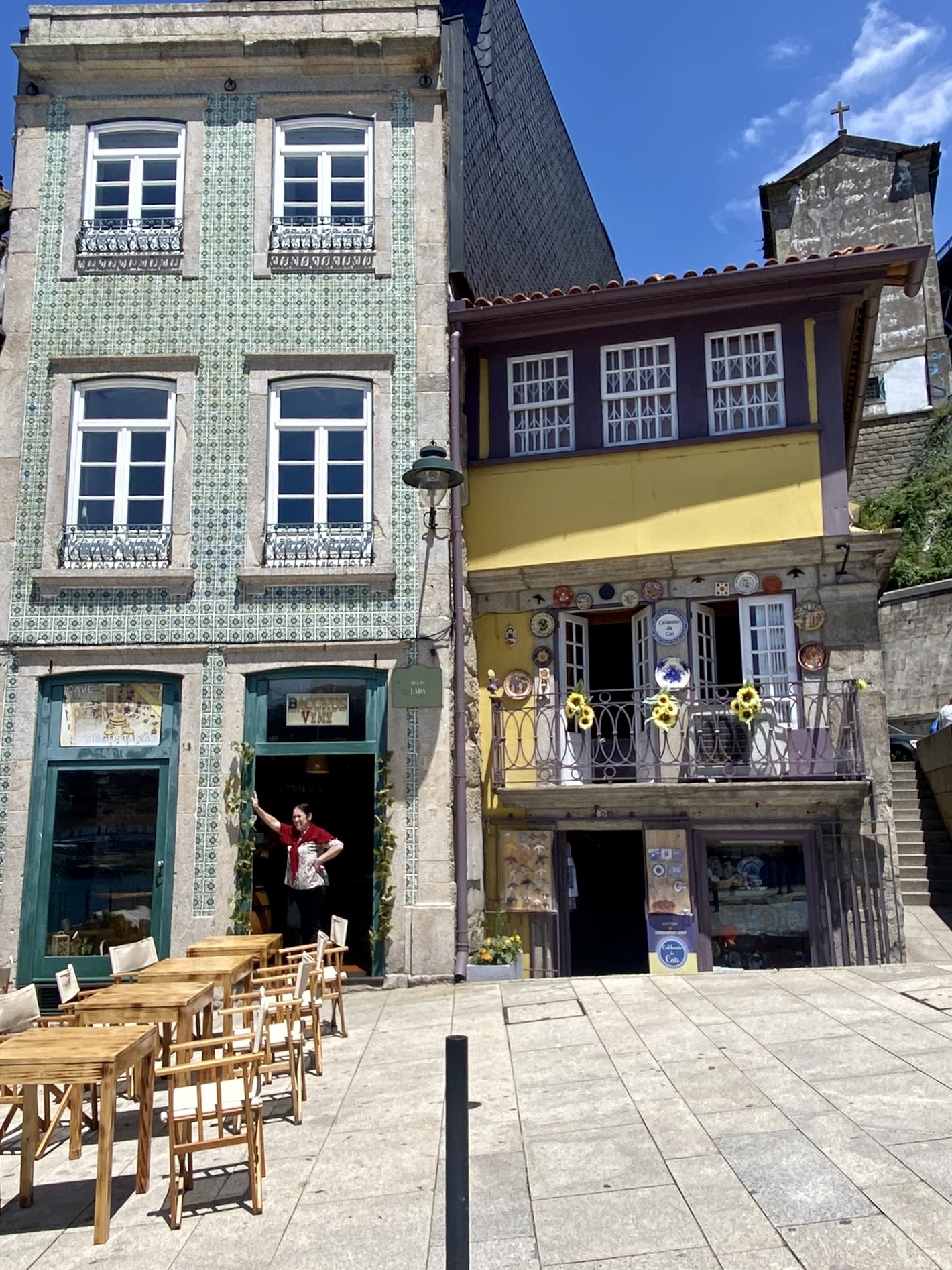
We crossed the river for lunch at Taberninha do Manel. Lunch was excellent and very filling: local chorizo, local bread and quince jam, sheep cheese, veal cheeks, and cod casserole.
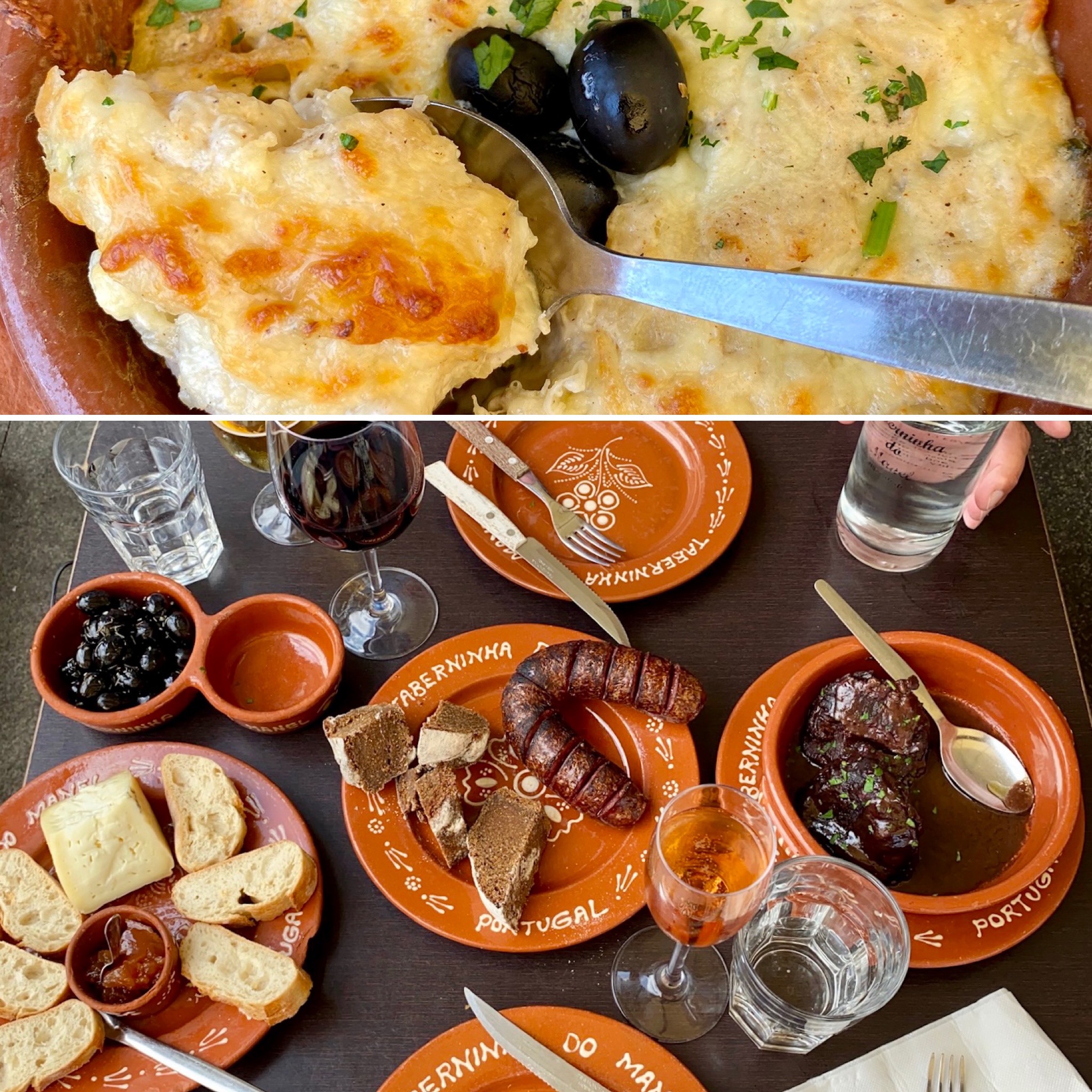
With our bellies full it was time to try more port! We visited Caves Vasconcellos, an exclusive house that has zero distribution: tasting room and shipping only. We tasted 30-year and 40-year tawnies, which were their best expressions. We were told that their 40-year fully contains wine of at least 40 years, with some 60-70 year expressions included. Truly a treat to meet with a winemaker so passionate about his craft.

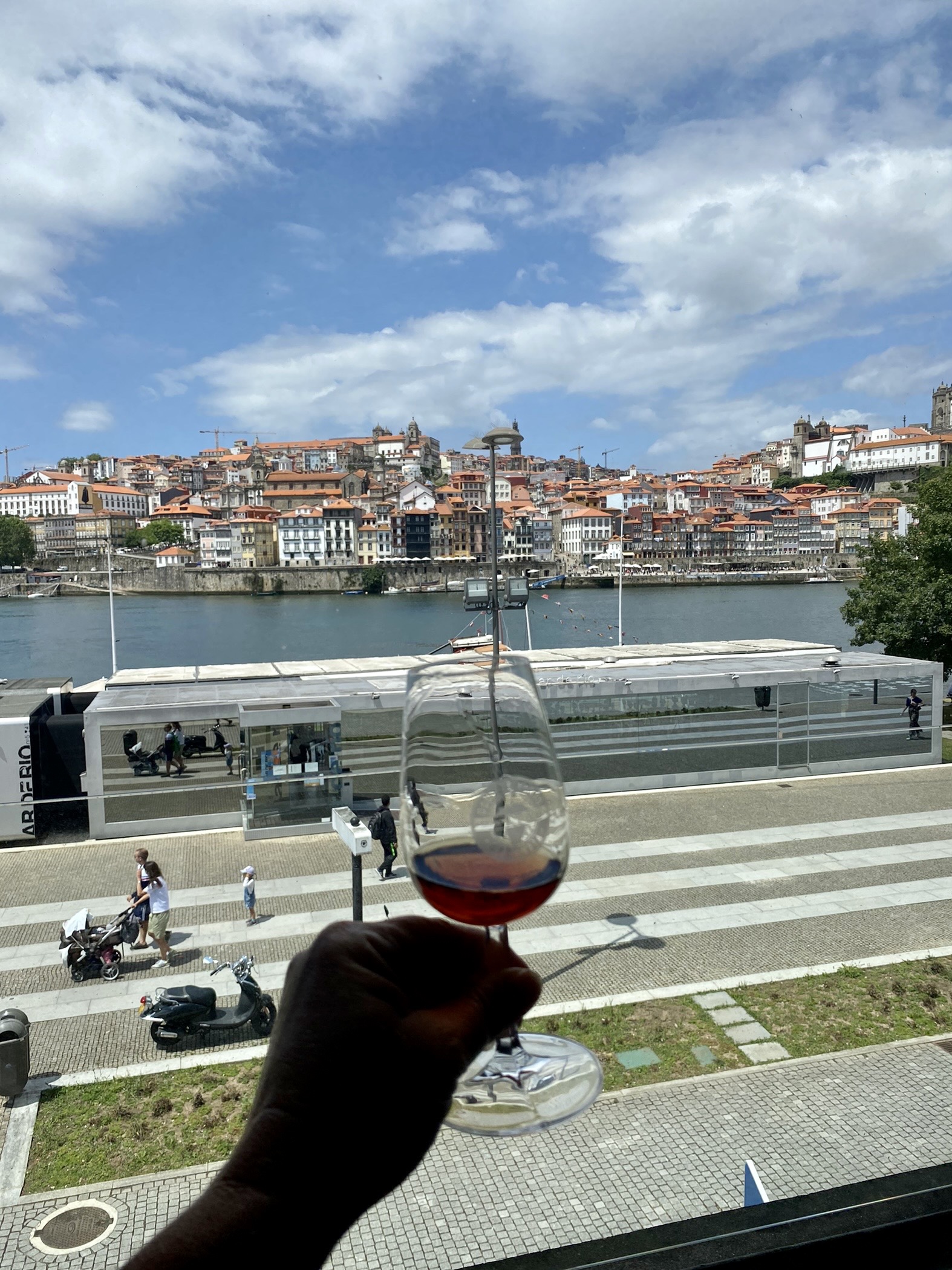
We then stopped at another port house, Quinta do Noval. The ports were more simple overall, but the 1996 vintage ruby and the 20-year tawny were both outstanding. We also had a beautiful view of the river walk.
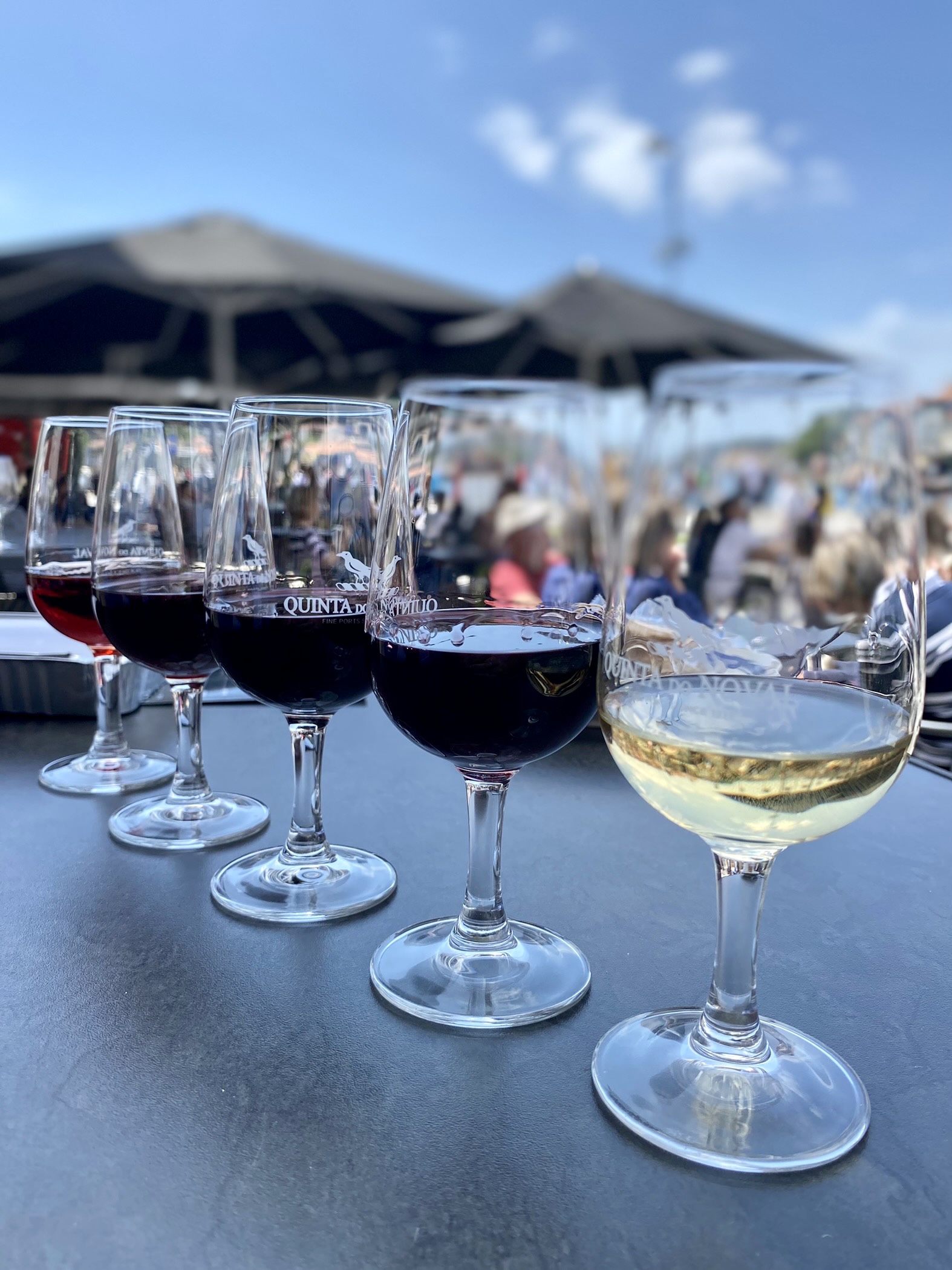
The day went by fast and we can’t wait to visit again to explore more: there are beaches to see and less touristy areas to explore.
Vigo, Galicia, Spain
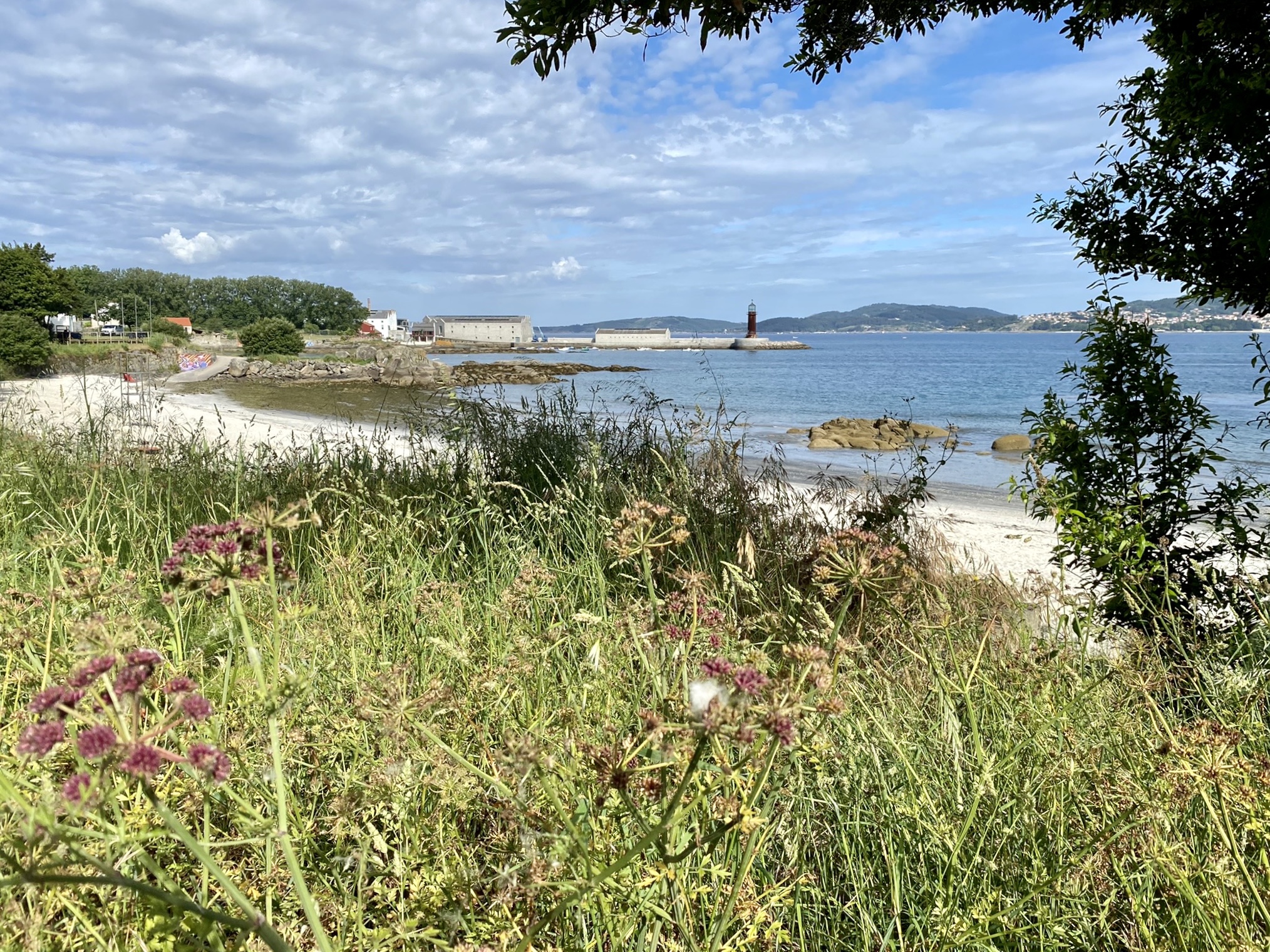
If Kauai is the Garden Island and New Jersey is the Garden State, we would nominate Vigo as the Garden City of Spain.
It is green and lush, with so many parks and trees. It even smelled lush. Vigo is a port city in Galicia, and is the biggest fishing port in the world. The Galicia region is unique as it was once part of a Celtic nation and the area has its own language, Galician. They are known for great seafood (octopus, sardines, and shellfish are on every menu), and refreshing white wine made from Albariño grapes.
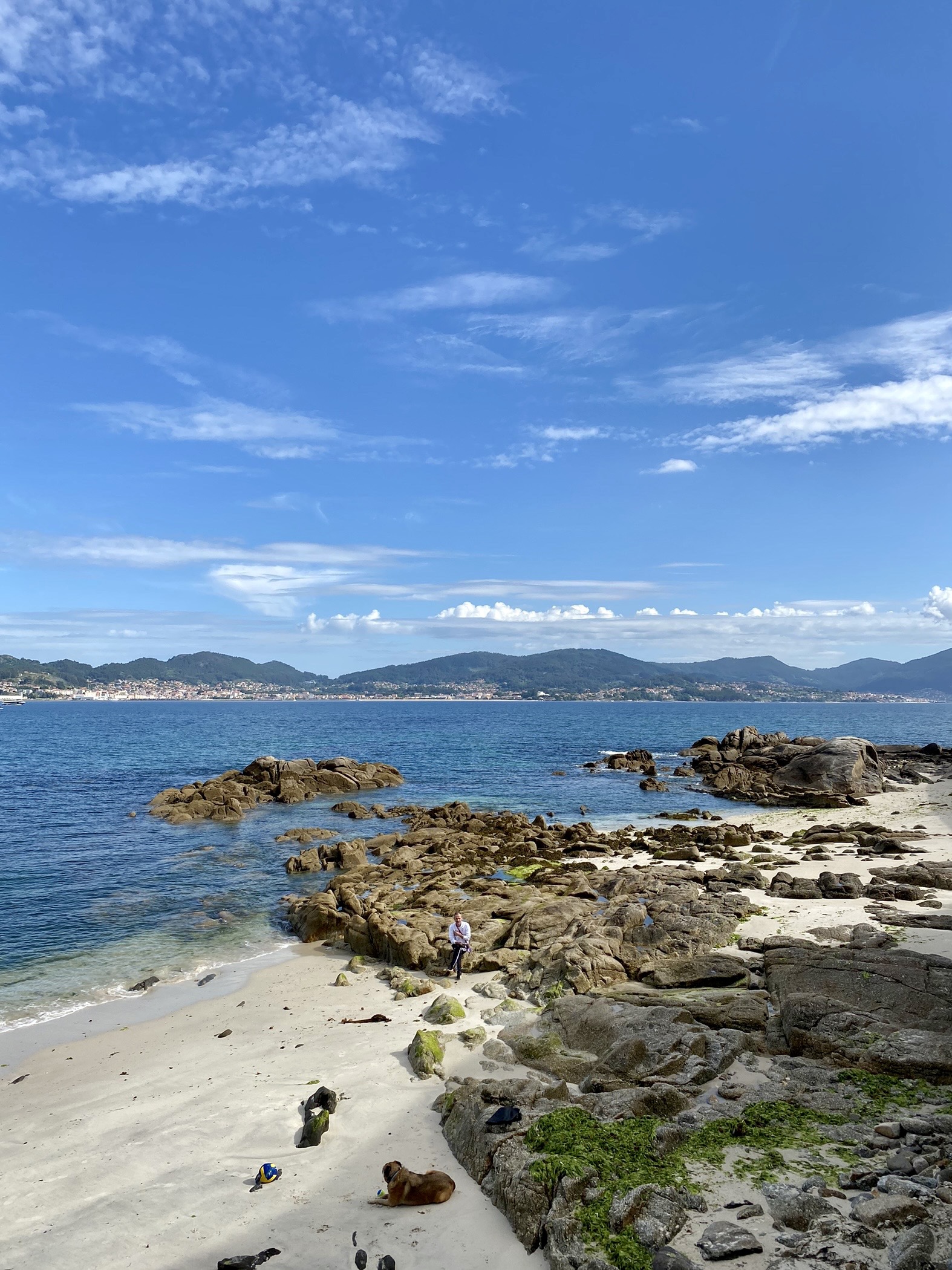
We weren’t sure what to do upon arrival. Most tourists visit Santiago de Compostela which is about an hour away and a very popular Christian pilgrimage. But with limited time, we did not want to head out of the city, and so we decided to explore the area around the port. We left the boat early, so early that the fish market was not yet open! But a cafe was, and we had a wonderful breakfast with coffee and croissants, and churros dipped in chocolate. A typical Spanish way to enjoy the morning (late to us but early to the Spanish, even the fishermen). Photo on our Insta!
We then hopped on a local bus that circumnavigates the city. At about halfway through, we jumped off and walked to the coastline. At first, we walked through a gritty industrial/nautical area, but it then transformed into a quaint river village scene, then unfolded into a picturesque coastal stroll.
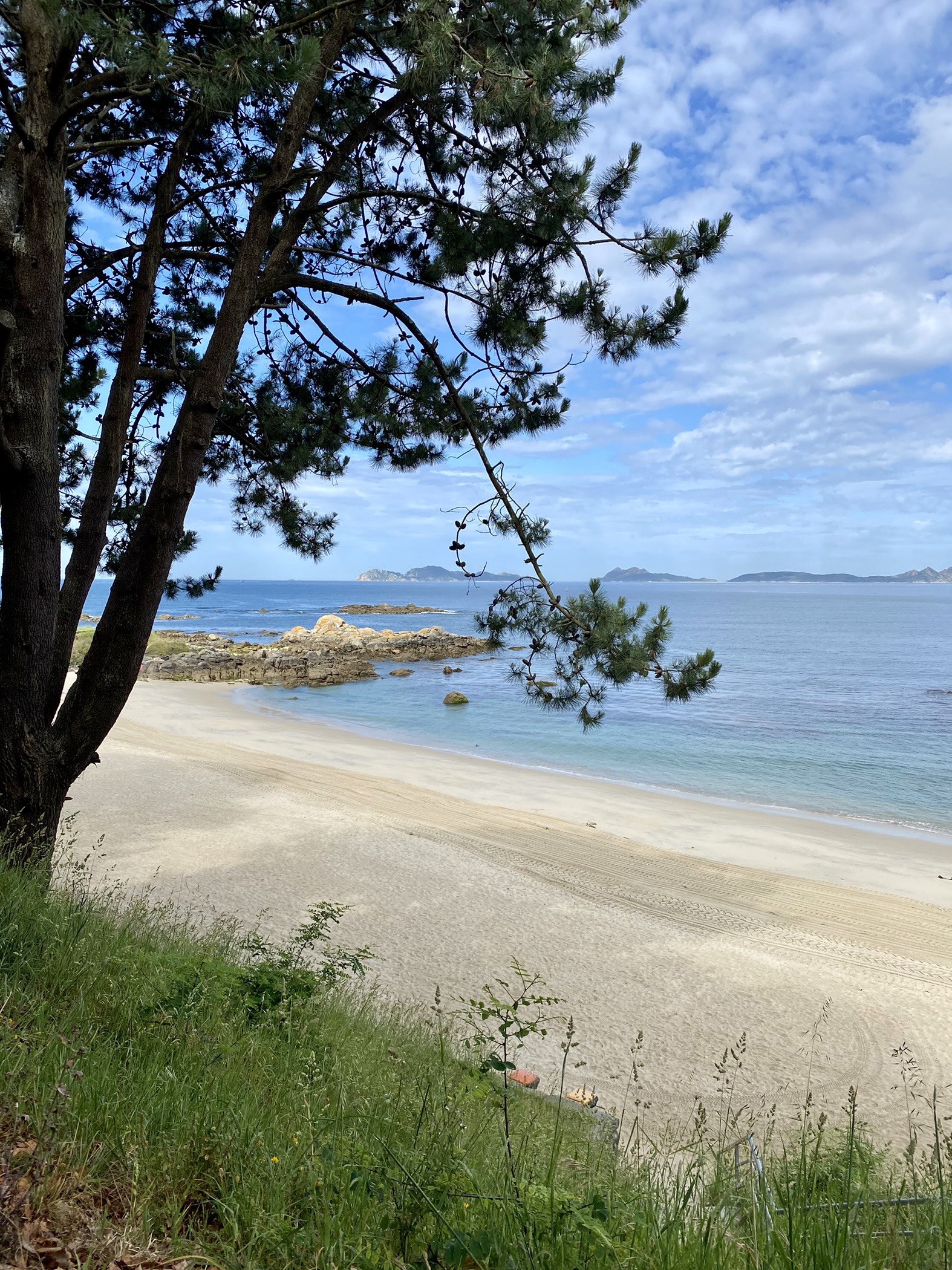
It felt like we were a hundred miles away from the cruise port, the ship, and any other passengers. Even though I do not work on cruises anymore, I still love the feeling of getting away!
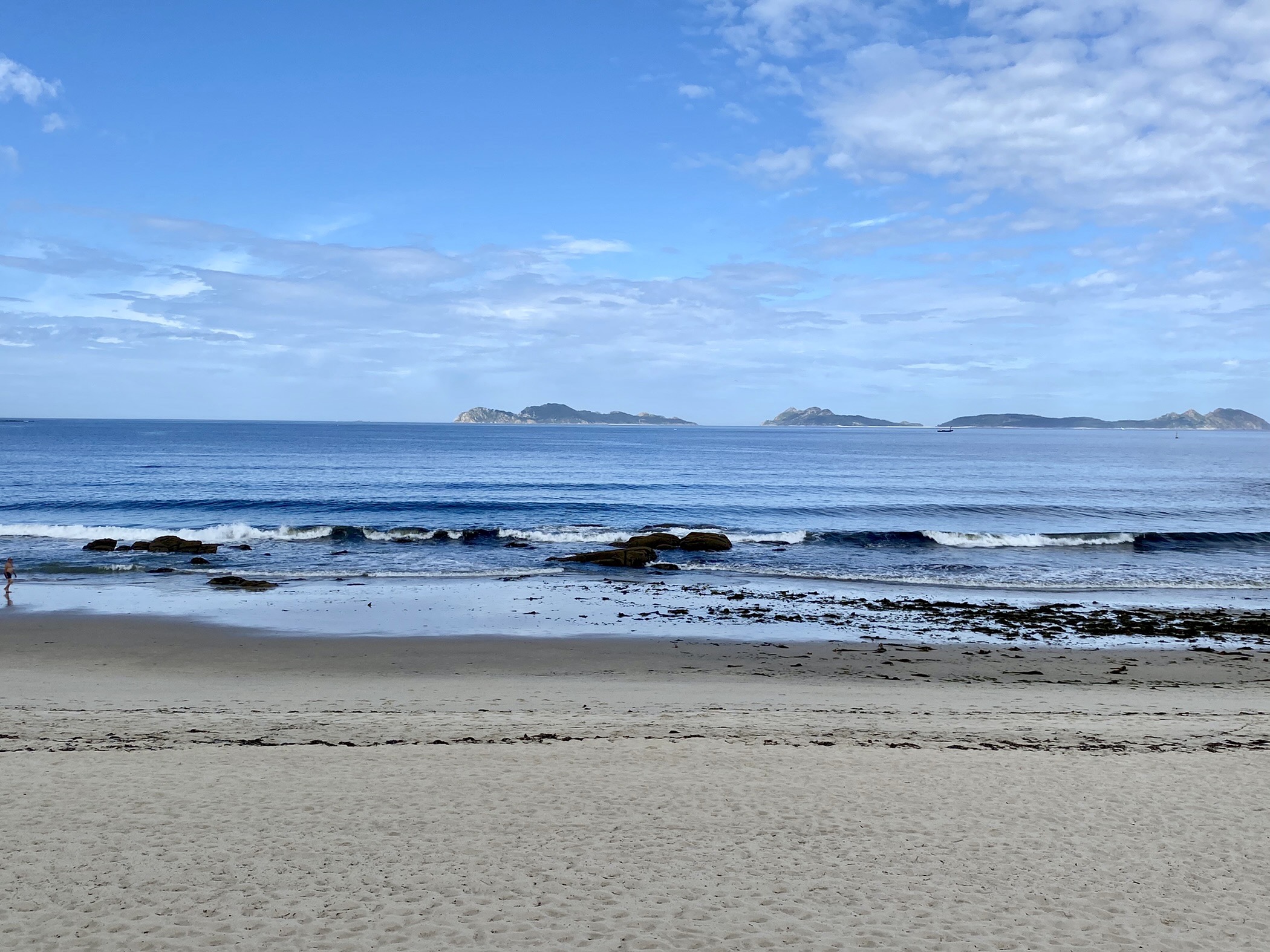
Like most days in Spain, we were ready for lunch before Spain is ready to open for lunch. So we stopped at the only place open at 11, McDonald’s. Don’t judge us! There were beach cafes but no one started serving food until 1 PM! (Corey noted that McDonald’s in Spain carries their excellent chicken wings, not seen in the U.S. for many years.)
It was threatening to rain, so we played bus roulette at the nearest stop and got lucky: a bus that drove us around the city and dropped us up at the top of the hill above the port. We visited MARCO which features contemporary art.
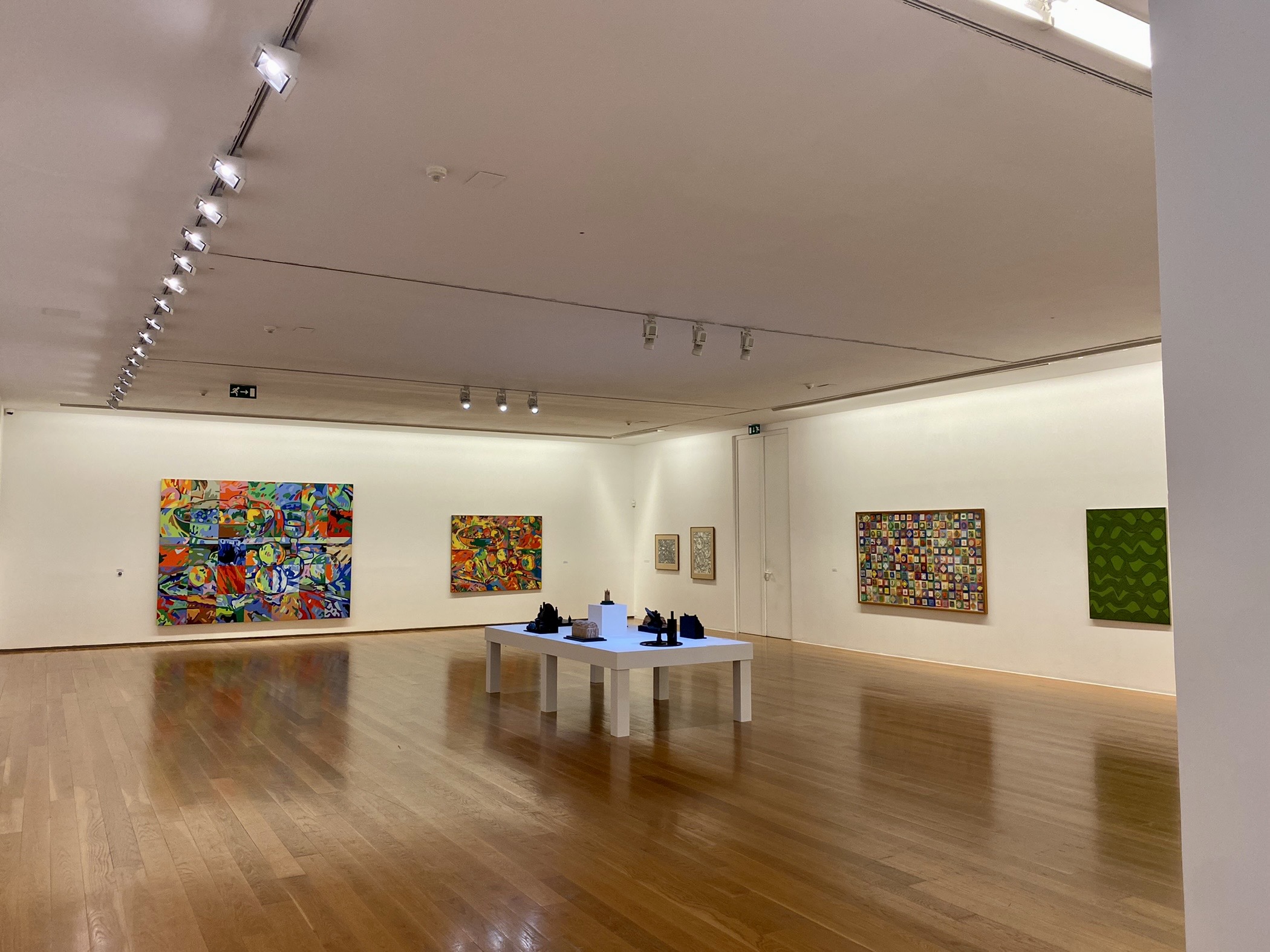
Vigo is famous for its Rua das Ostras so we passed by a number of interesting places to go down the hill to Oyster Street. Top tip! Don’t eat there! It’s a tourist ripoff. There’s a number of fantastic tiny tavernas just a block or two up the hill that are half the price and higher quality. But it was pouring down rain at this point, so we made the decision to stay and grab something small while under cover. It was still good seafood, but as usual, the further you get from the cruise ship (especially if you have to climb a few sets of stairs), the better and cheaper the food will be.
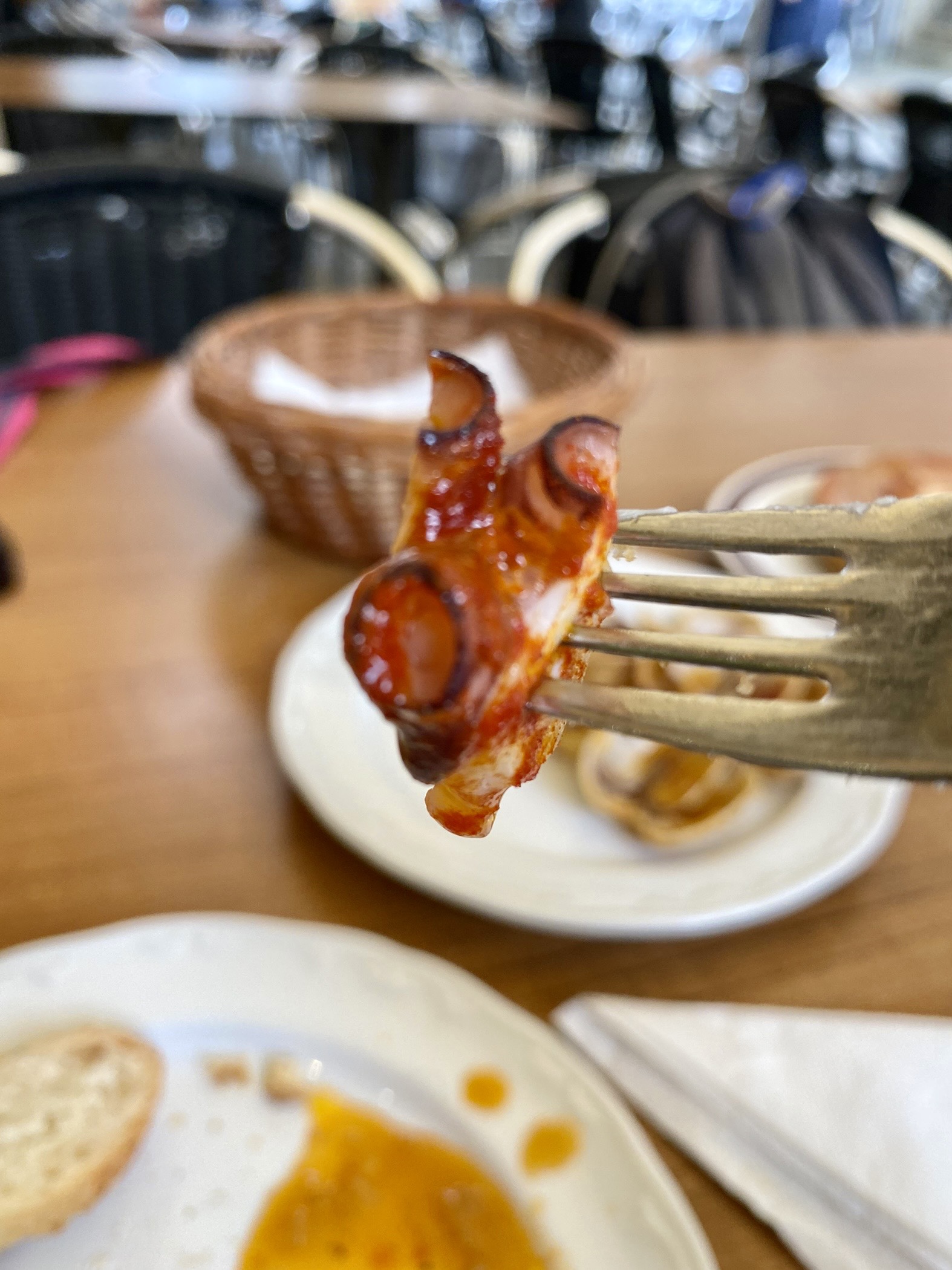
So when the rain stopped, that is just what we did: Headed back up the hill to a small outdoor counter where every time we ordered a round of vermouth (vermut), the server also brought us a plate of amazing tapas on the house through a window.
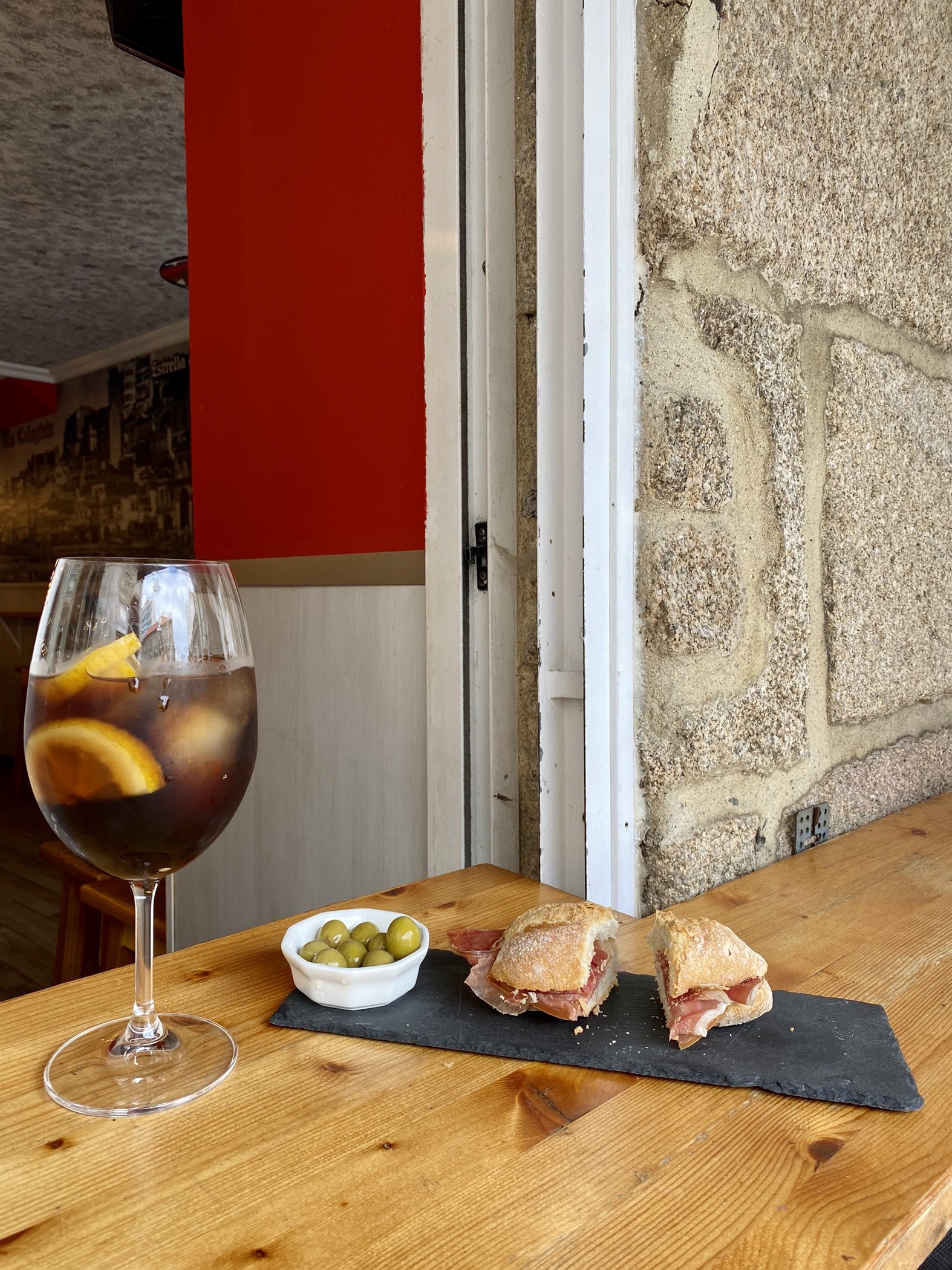
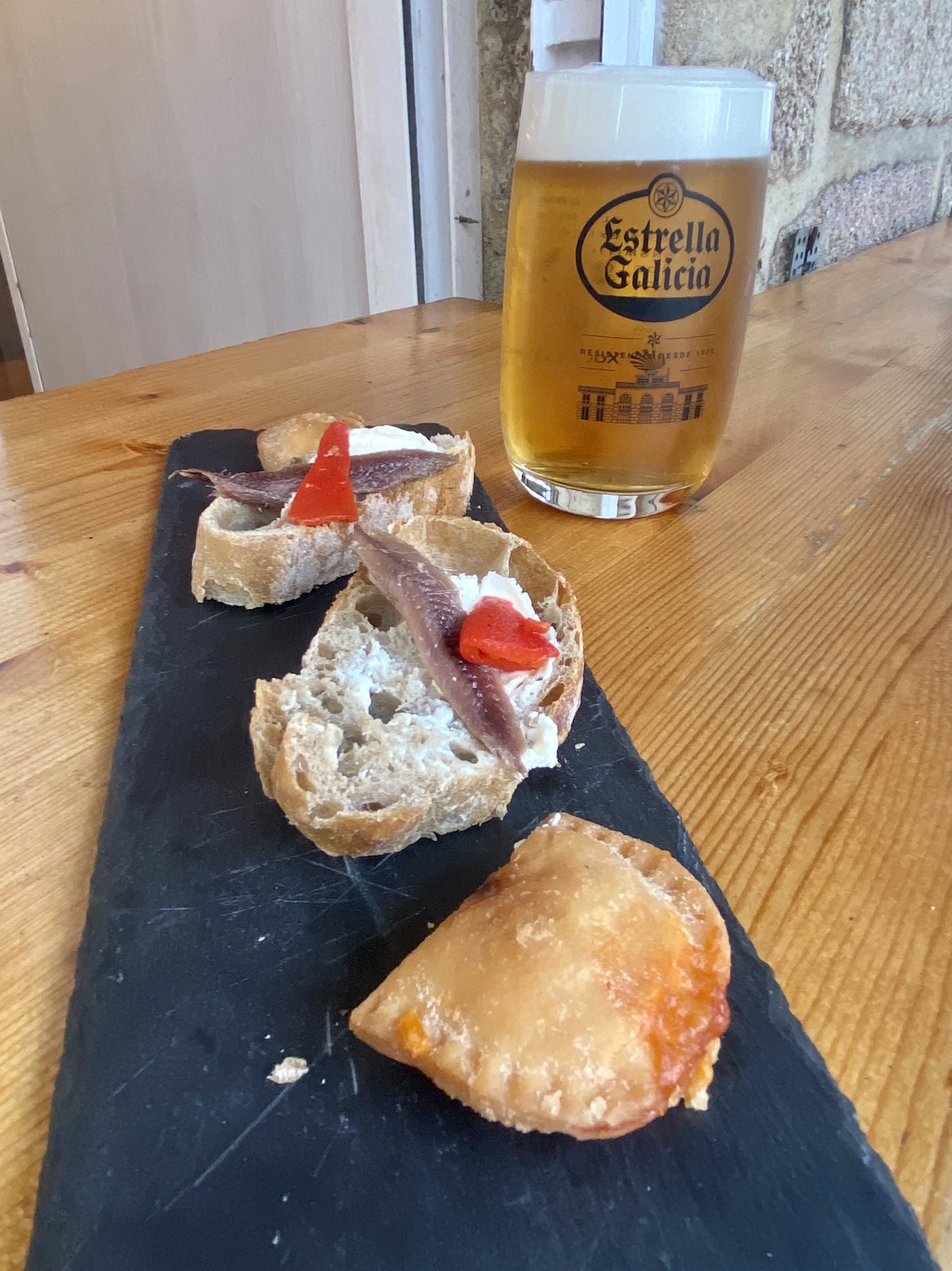
Coruña, Galicia, Spain
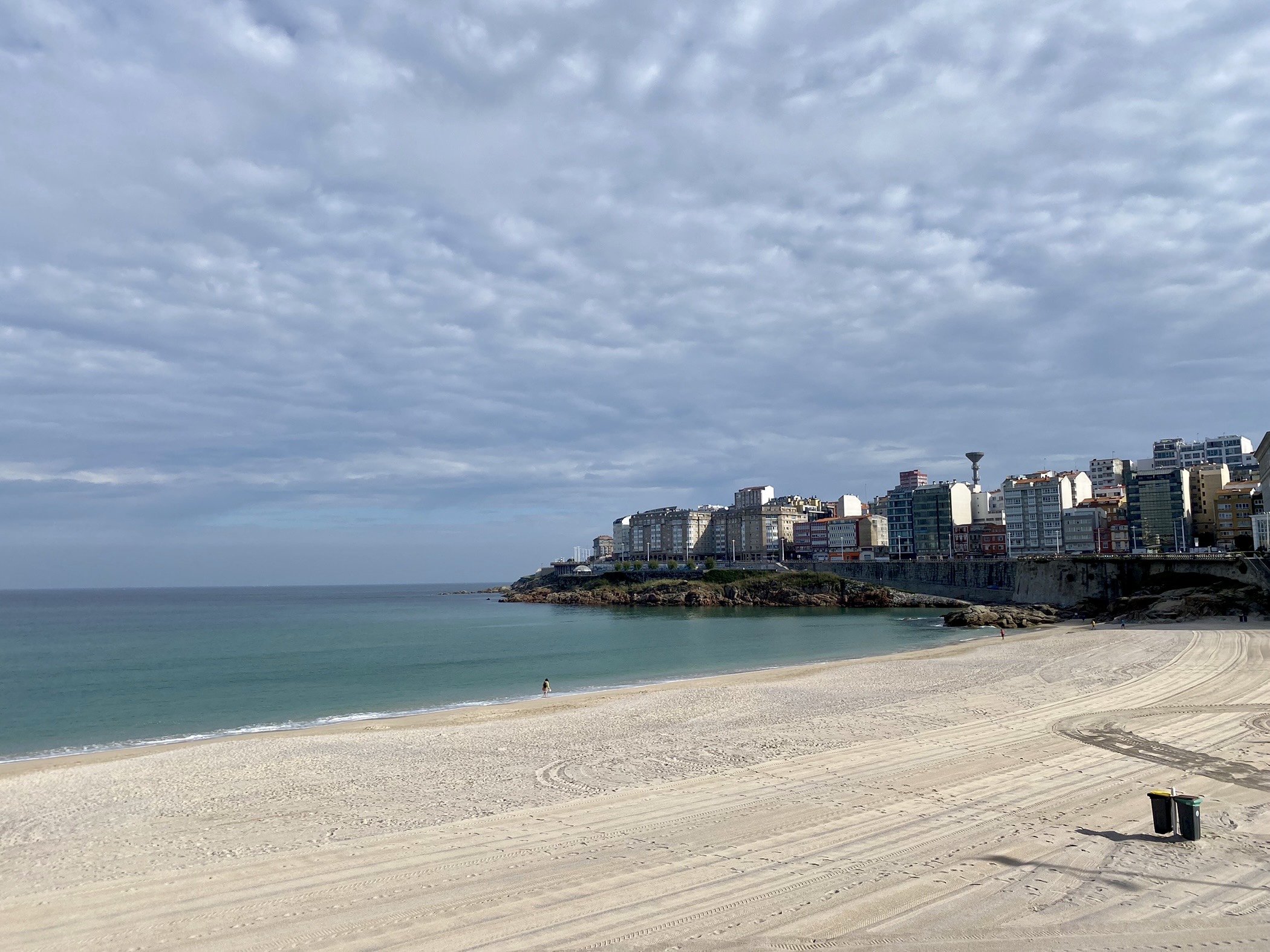
In northern Galicia, A Coruña is a coastal city with a large beach and buzzy tapas scene. It’s more cosmopolitan than Vigo.
The town is known as La Coruña in Castilian Spanish, and A Coruña in Galician (which is fairly similar to Portuguese).
The weather was forecast to be cold and rainy so we crossed “beach day” off the list and realized that we had no other plans. We walked through town looking to get pedicures, but on a Saturday, everything was already booked or closed. So we decided to drink beer.
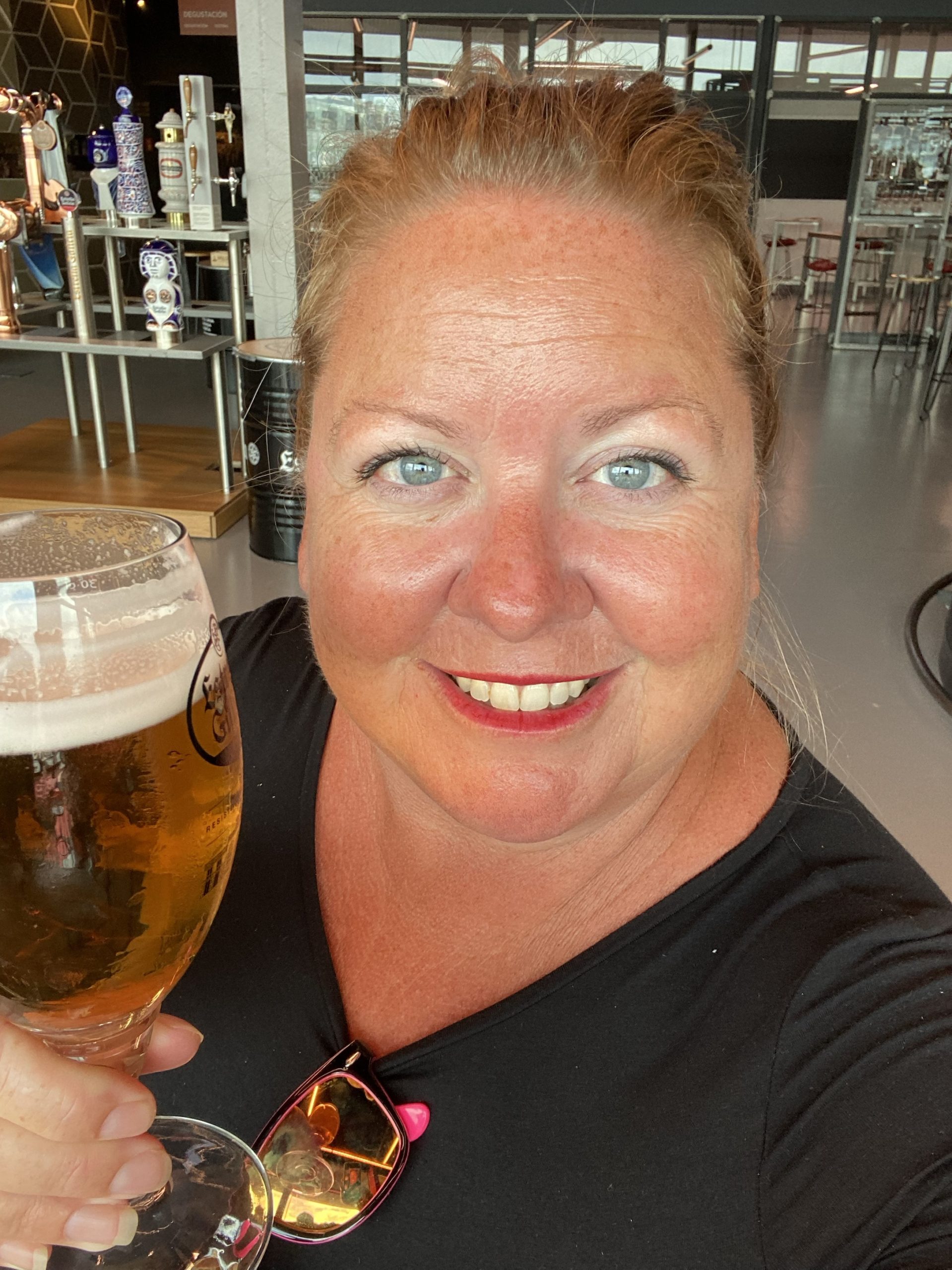
MEGA is an appropriate name for the Museo Estrella Galicia, a “museum” combining beer education with a tasting experience, from one of the few mega-brewers left not owned by the “Big Two” beer conglomerates. We hopped on the bus and made it there easily, but since we did not plan in advance, we missed the only English tour of the day. Doh!
So we joined the Spanish tour! It was a stunning museum with modern exhibits with all the bells-and-whistles. It walked through both the history of beer and the history of Estrella, as well as what goes into making beer styles unique. You get to taste wort (unfermented beer juice) as well as young beer (aka green beer, before the aging process).
At the end of the tour you get to pour your own pint from a cask tap (aka cellar beer or cerveza de bodega), and then are provided with a flight of five beers along with your choice of Spanish pairings: cured meats, cheeses, or tinned seafoods (conservas). We posted a video of this experience on our Insta!
We chose cheese and seafood and split it all. It was a fantastic afternoon, but book ahead to make sure you get the full tour experience in the language you prefer. It costs 35€ per person including the tasting flight and pairings but there were some cheaper options available that didn’t include a guide or tastings.
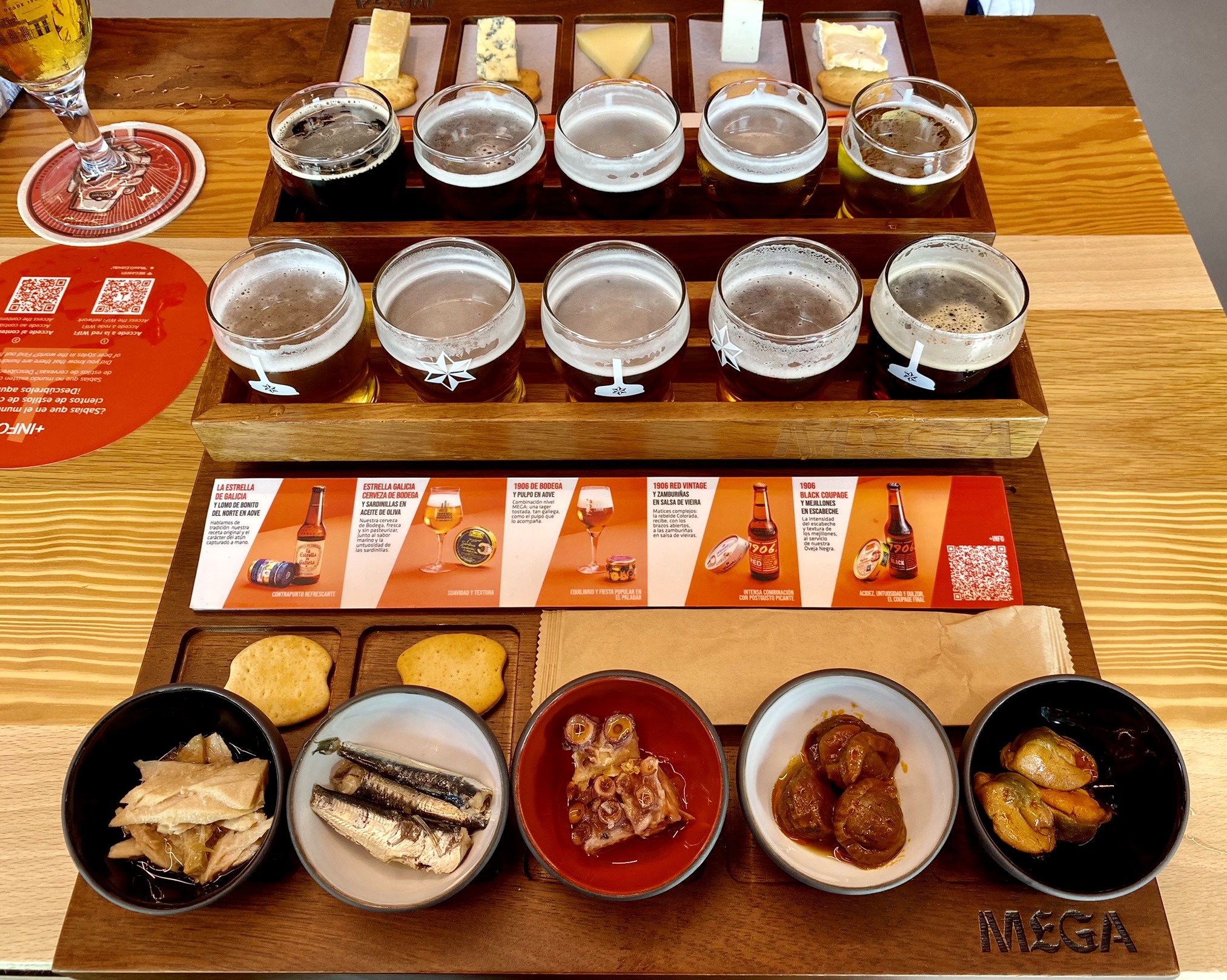
After beer tasting, we headed to Vermutería Martinez. We thought that this was an establishment with a selection of 150 vermouths. Instead they had 150 antique bottles on display, but what they served was their house vermouth (vermut de la casa). It was good! They had a full chalkboard of seafood snacks. We ordered jurelitos, which we are pretty certain were small Atlantic horse mackerel, served whole fried. Corey gobbled them down like a seagull. I cut off the head and tail and enjoyed it, but thought it needed some tartar for dipping!
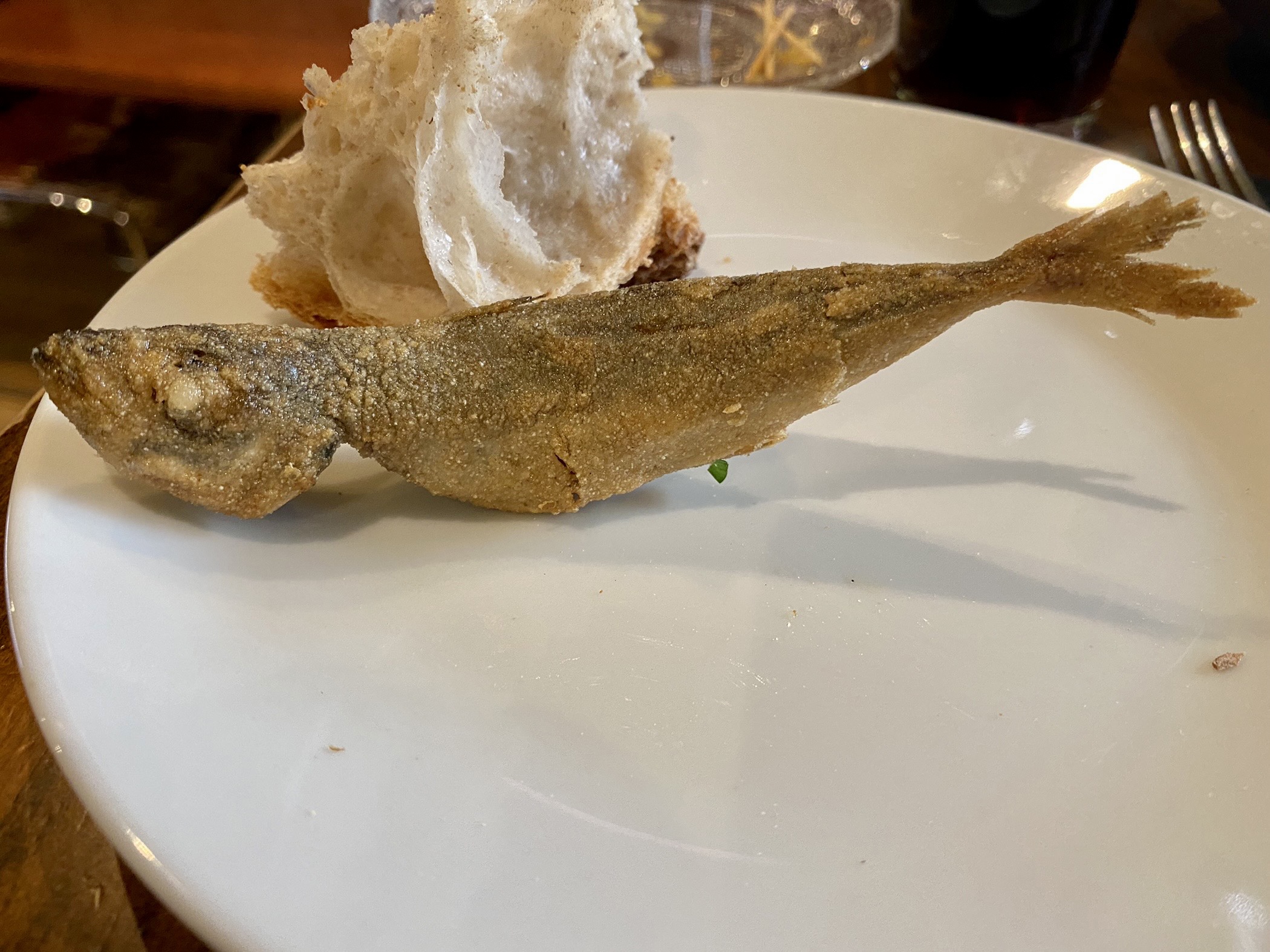
We have been talking a lot about the vermouth in Spain. It’s served everywhere, it’s delicious, and it is inexpensive. We’re hooked! You can find cheap bottles at the grocery store for 2€. We have done that, and we have splurged on local artisan vermouth for about 12€ a bottle. The Spanish enjoy it on the rocks with a slice of orange (sometime lemons) and olives (either in a bowl or as a garnish). It’s a typical daytime aperitif. During sail away we sit on our balcony and sip on iced vermouth with a slice of orange lifted from the breakfast buffet.
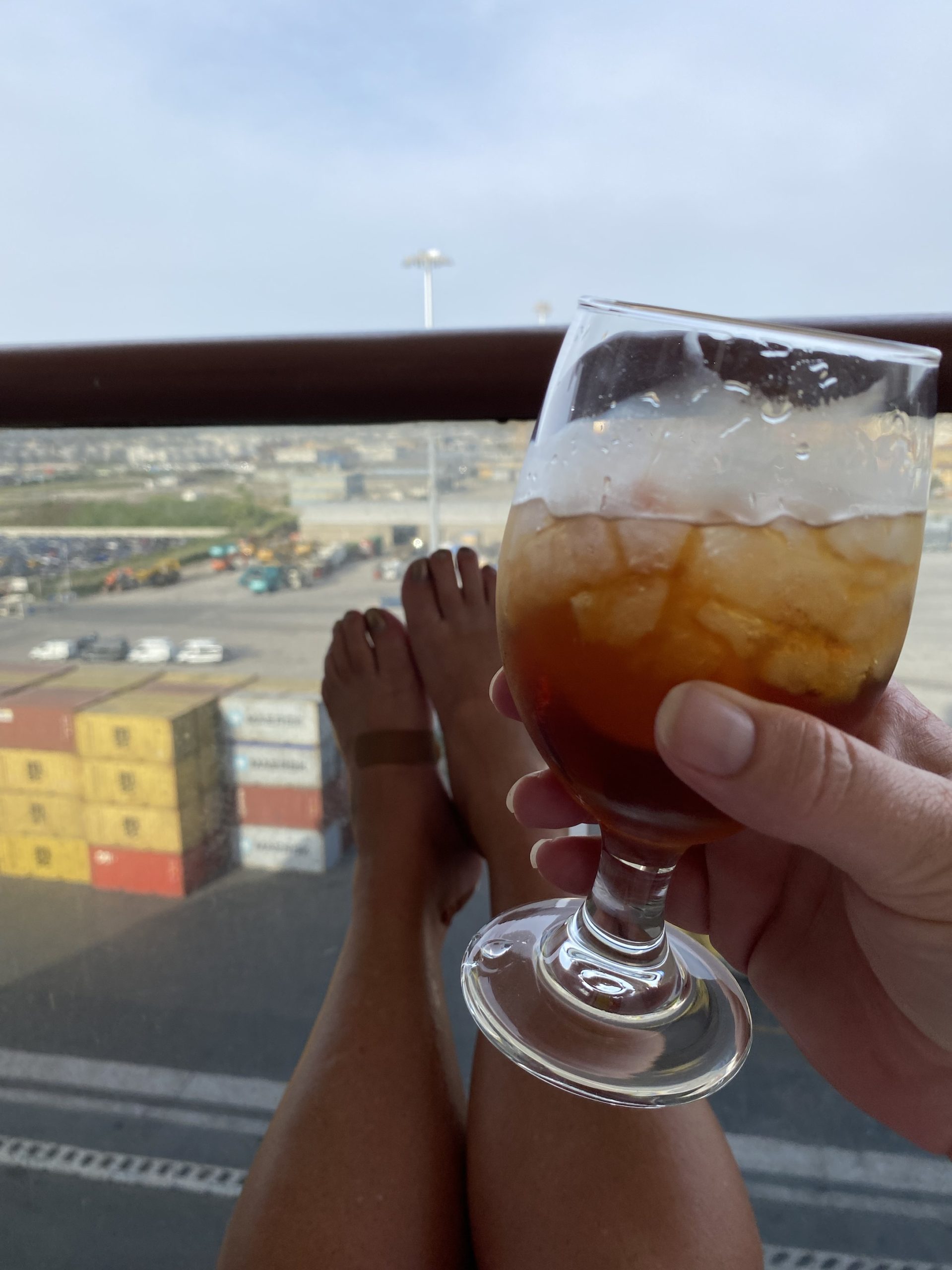
We have one Spanish port left to visit, Bilbao. Since this post is quite lengthy as it is, we will include our Bilbao experience in with the French and Belgian ports coming up this week. Take care everyone and add vermouth (white or red!) to your shopping list.
Leave us a comment and let us know what you think about vermouth!
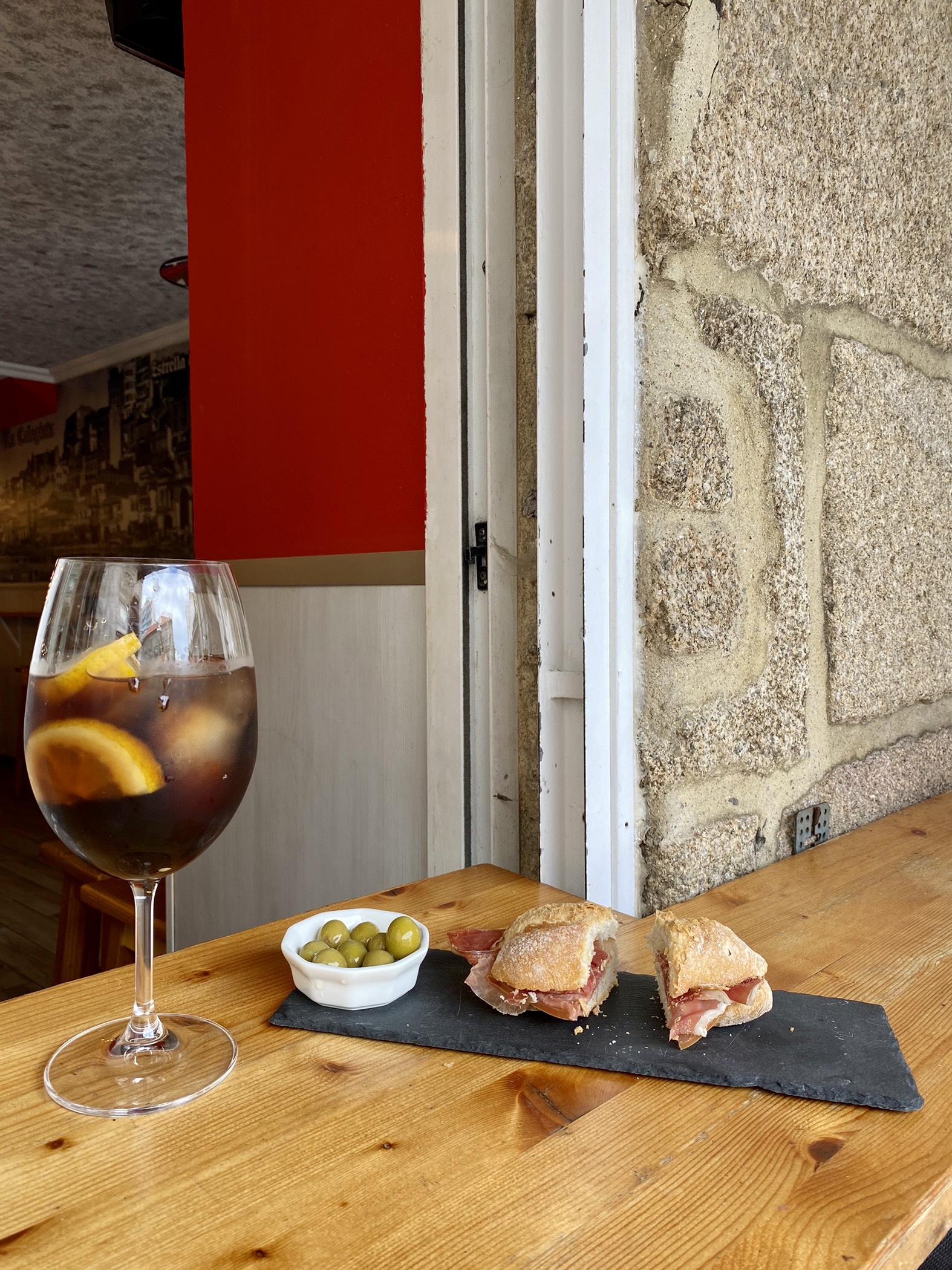
One thought on “Carnival Pride: Iberia”